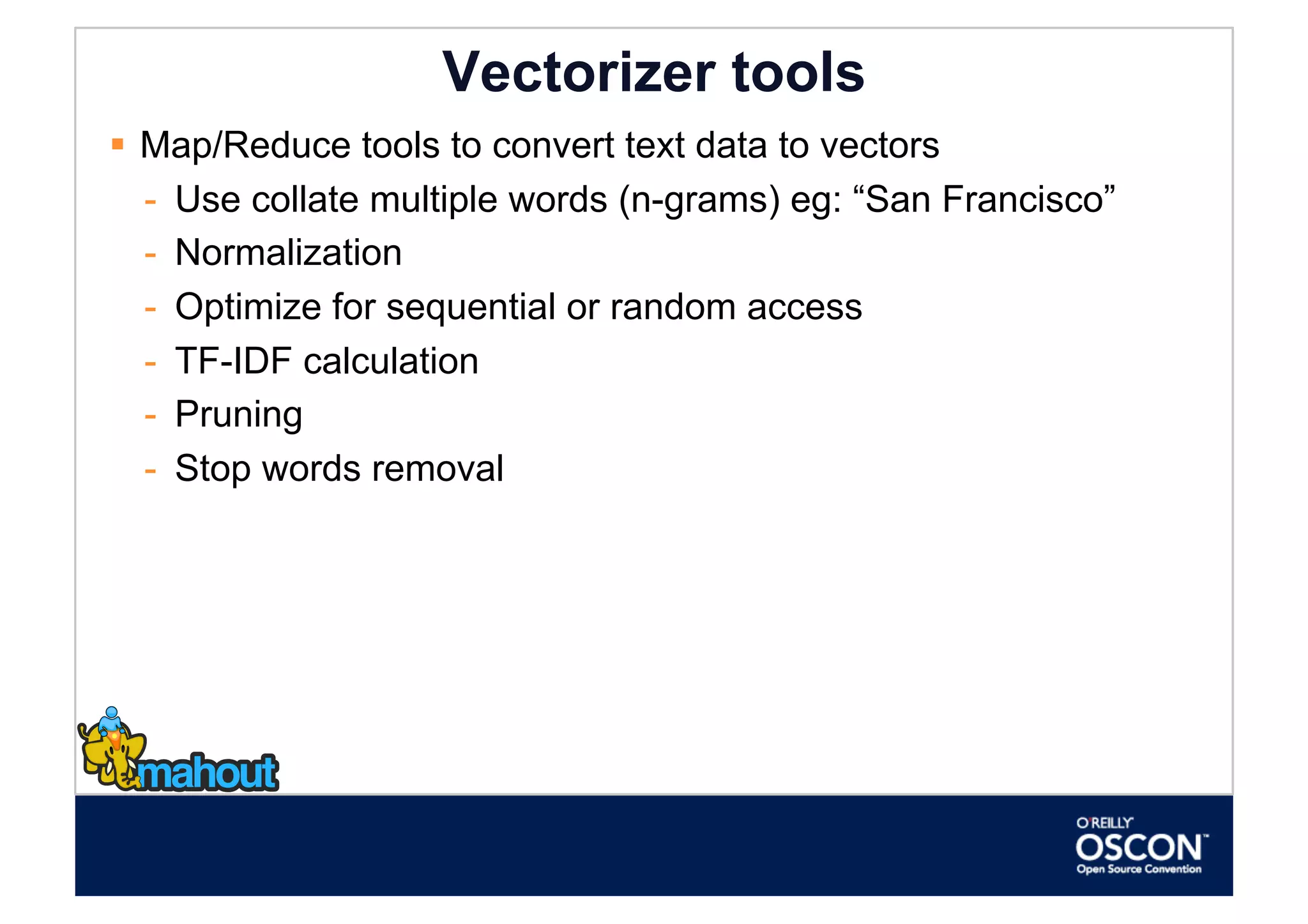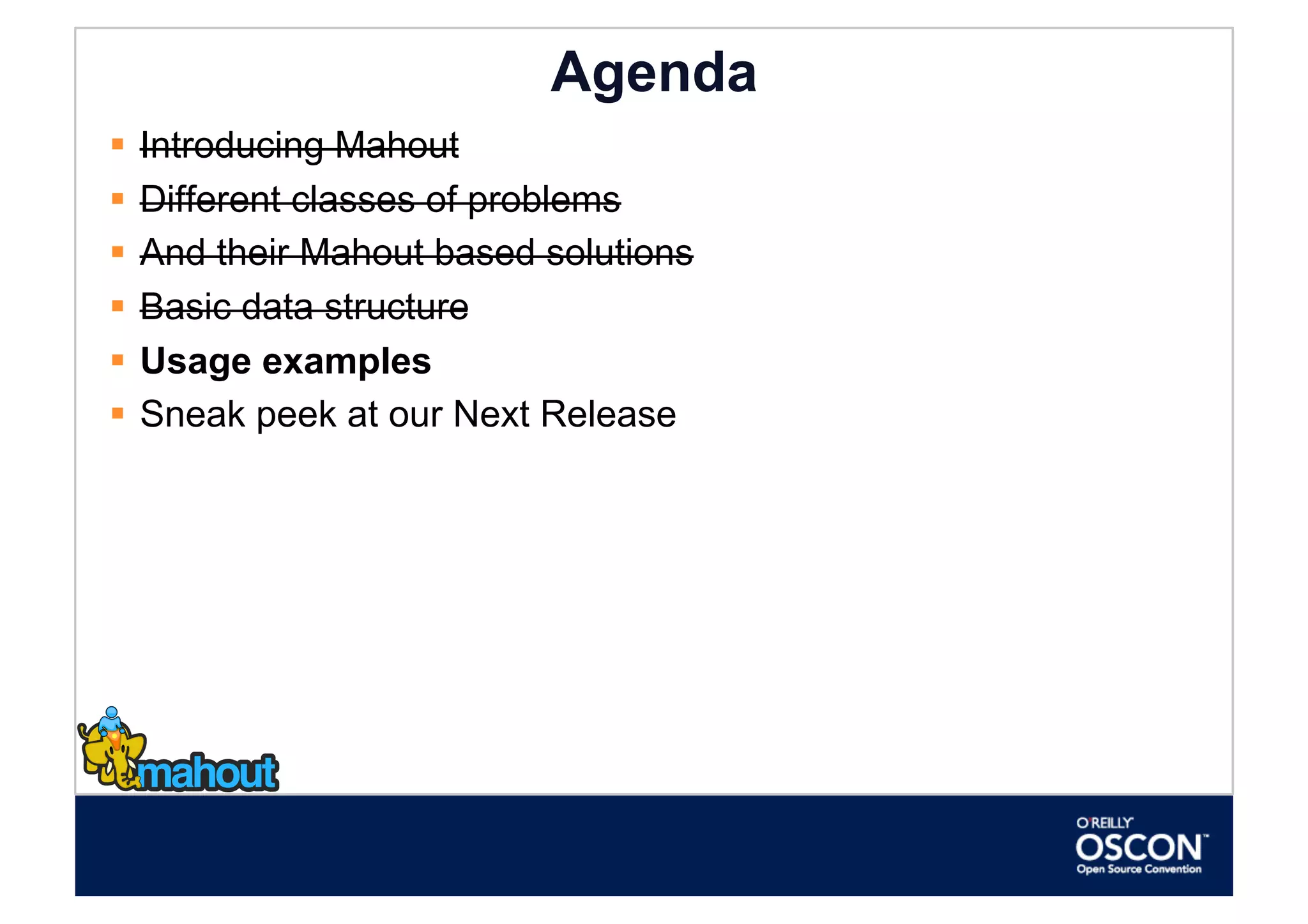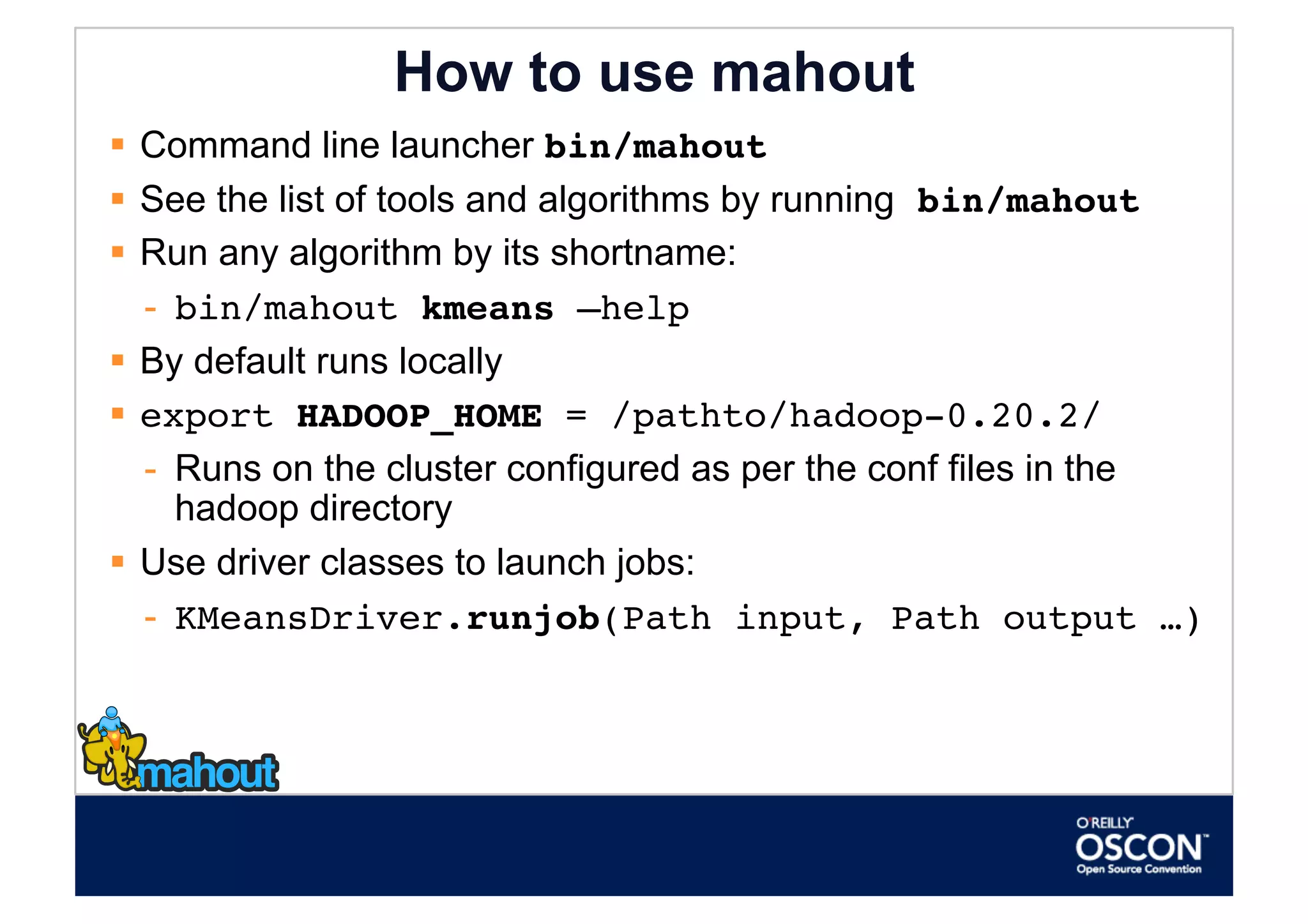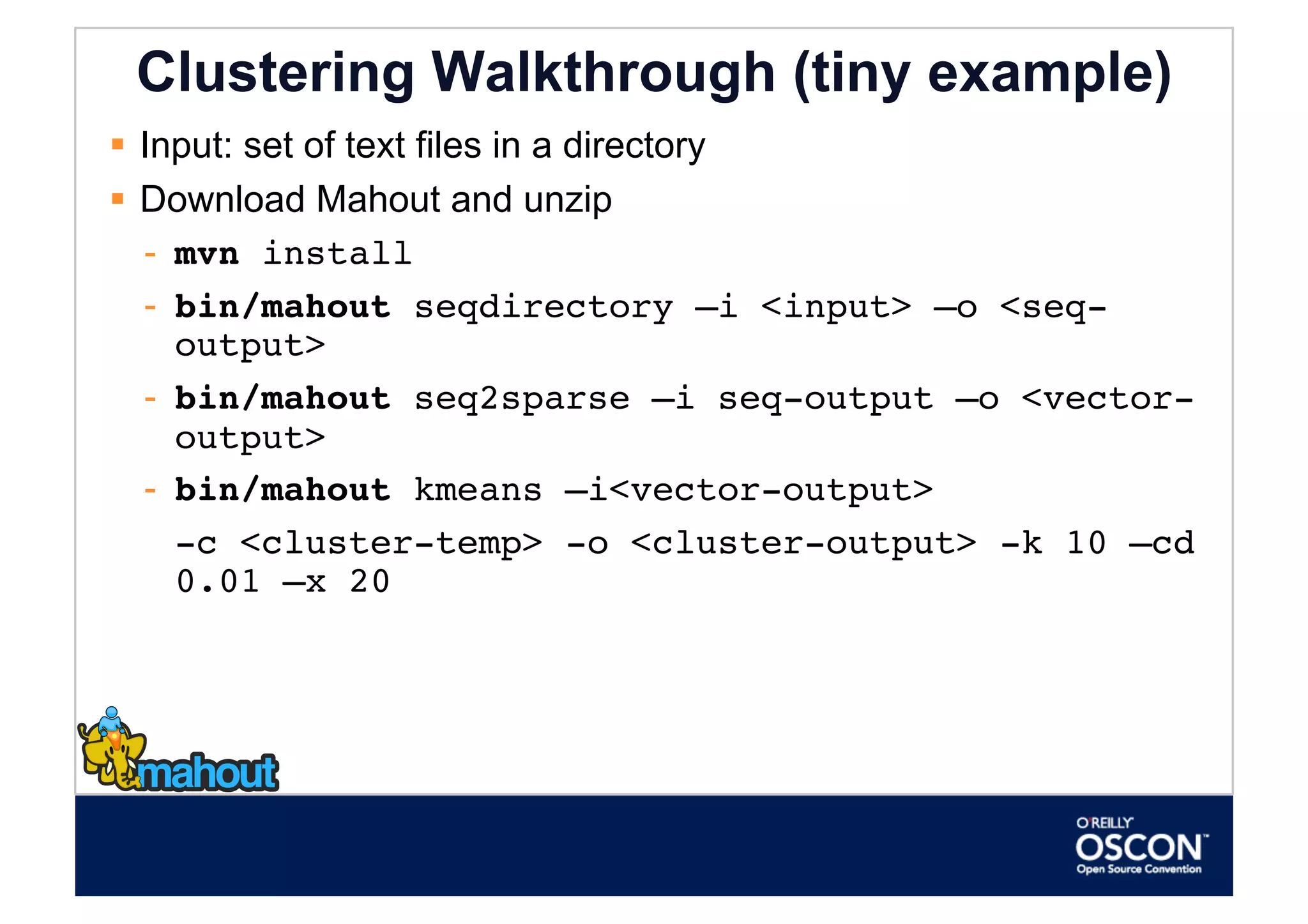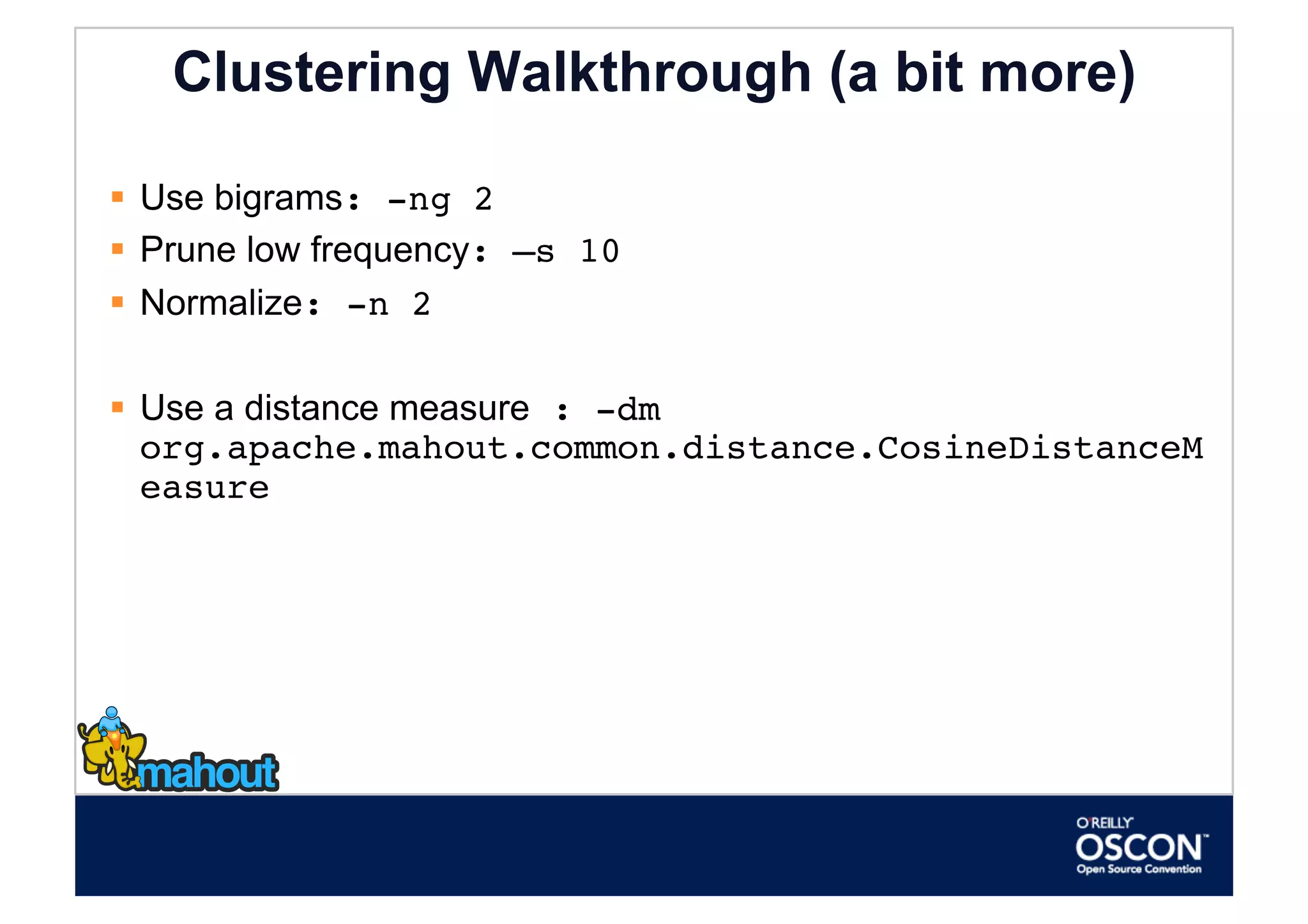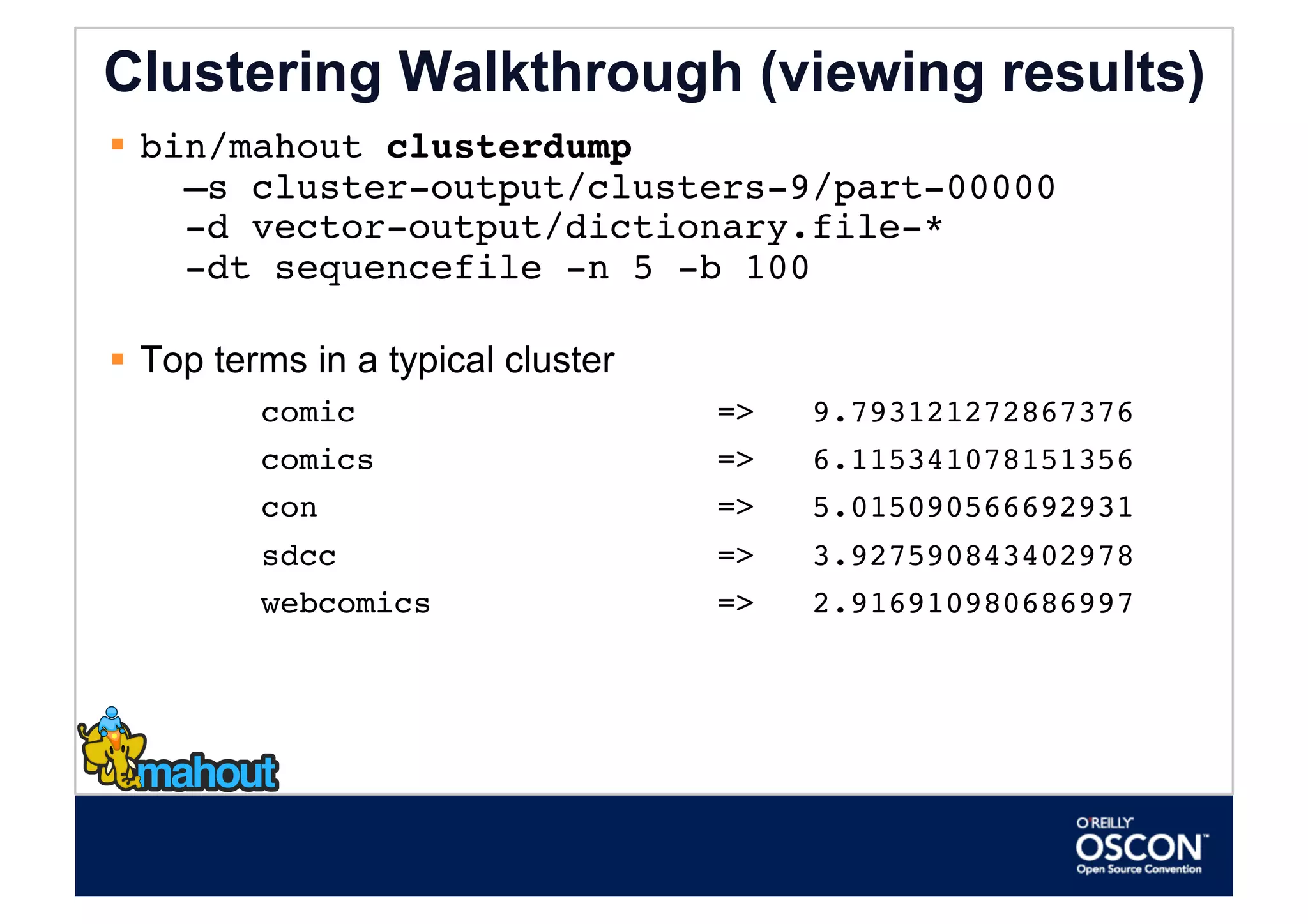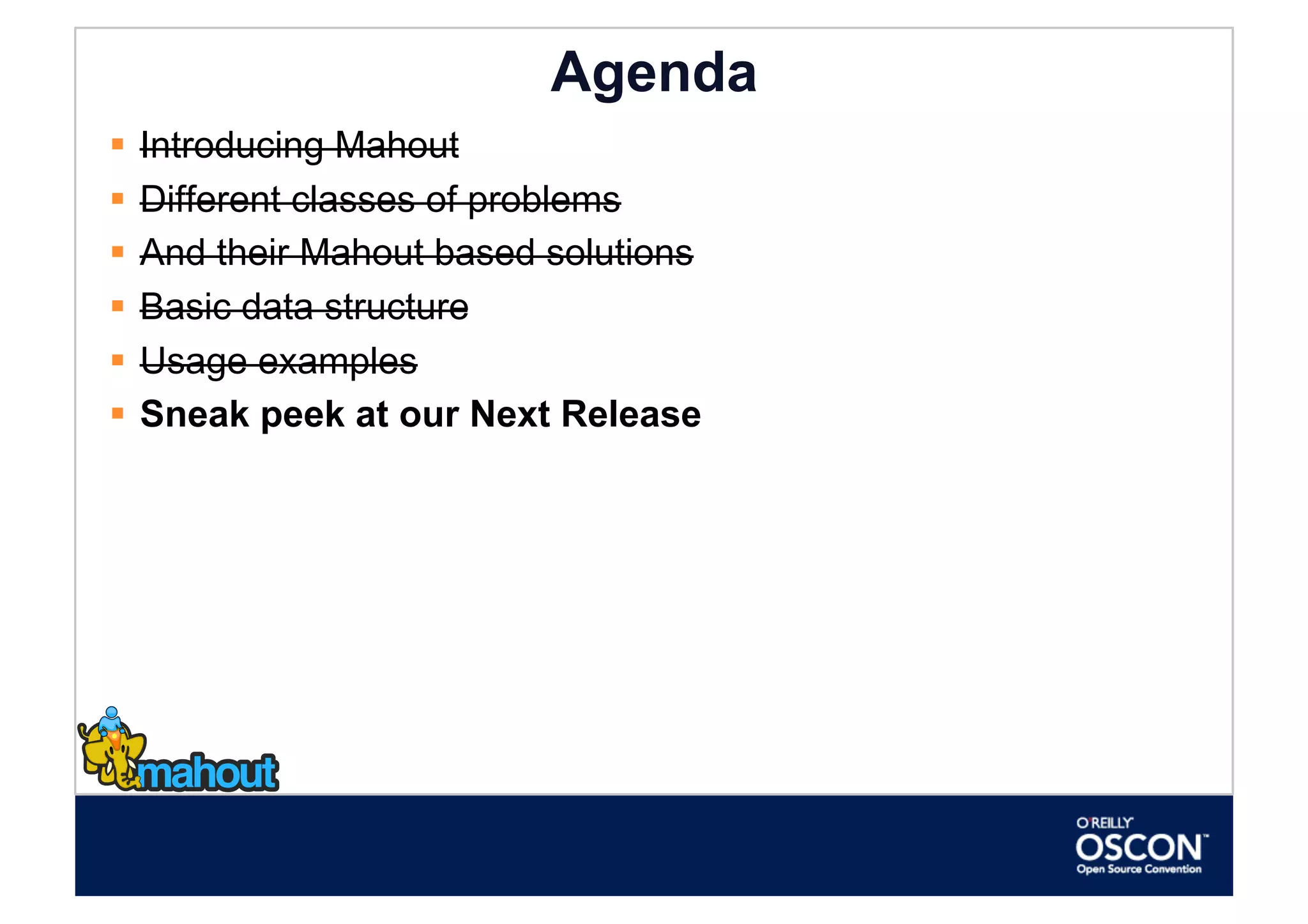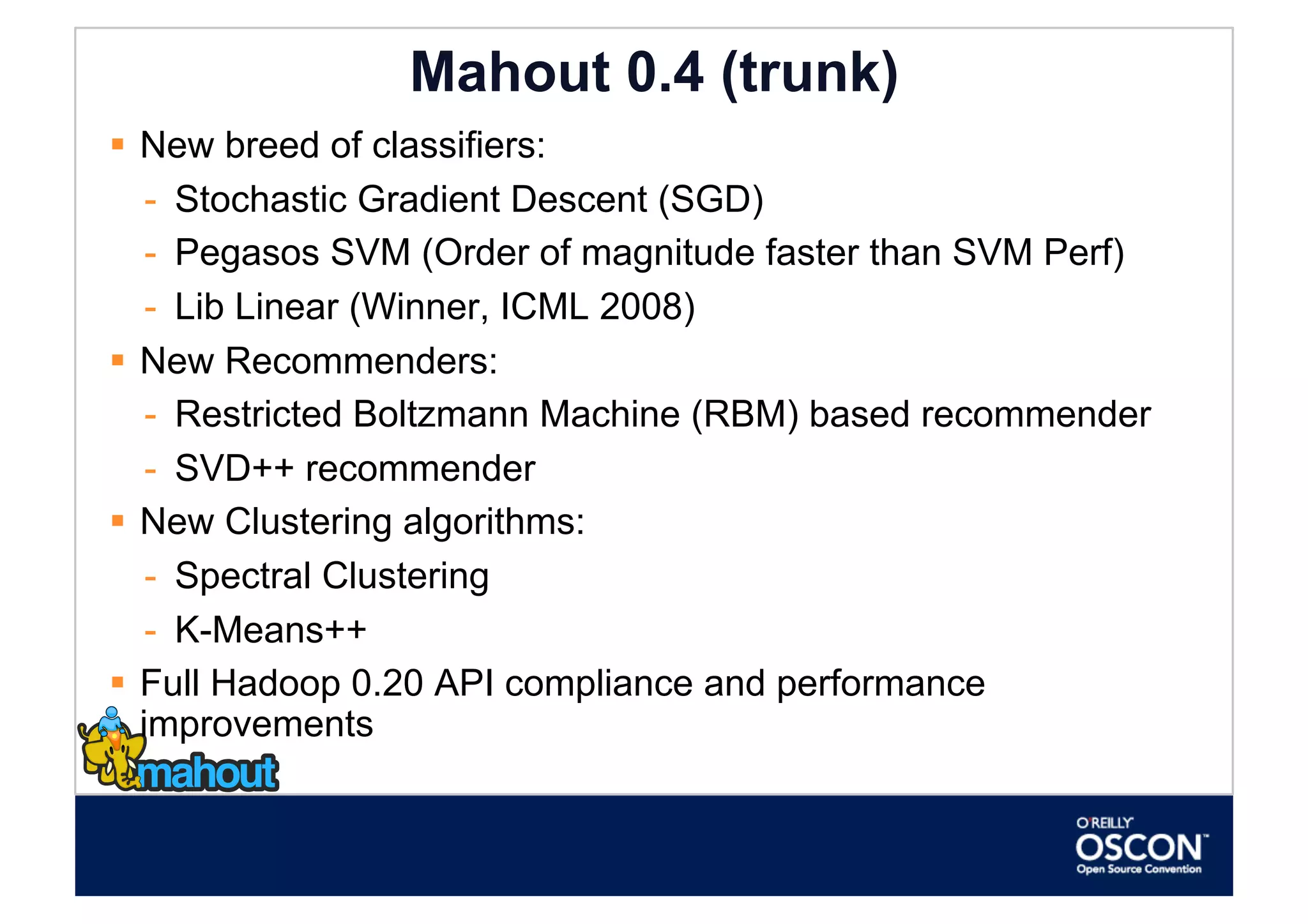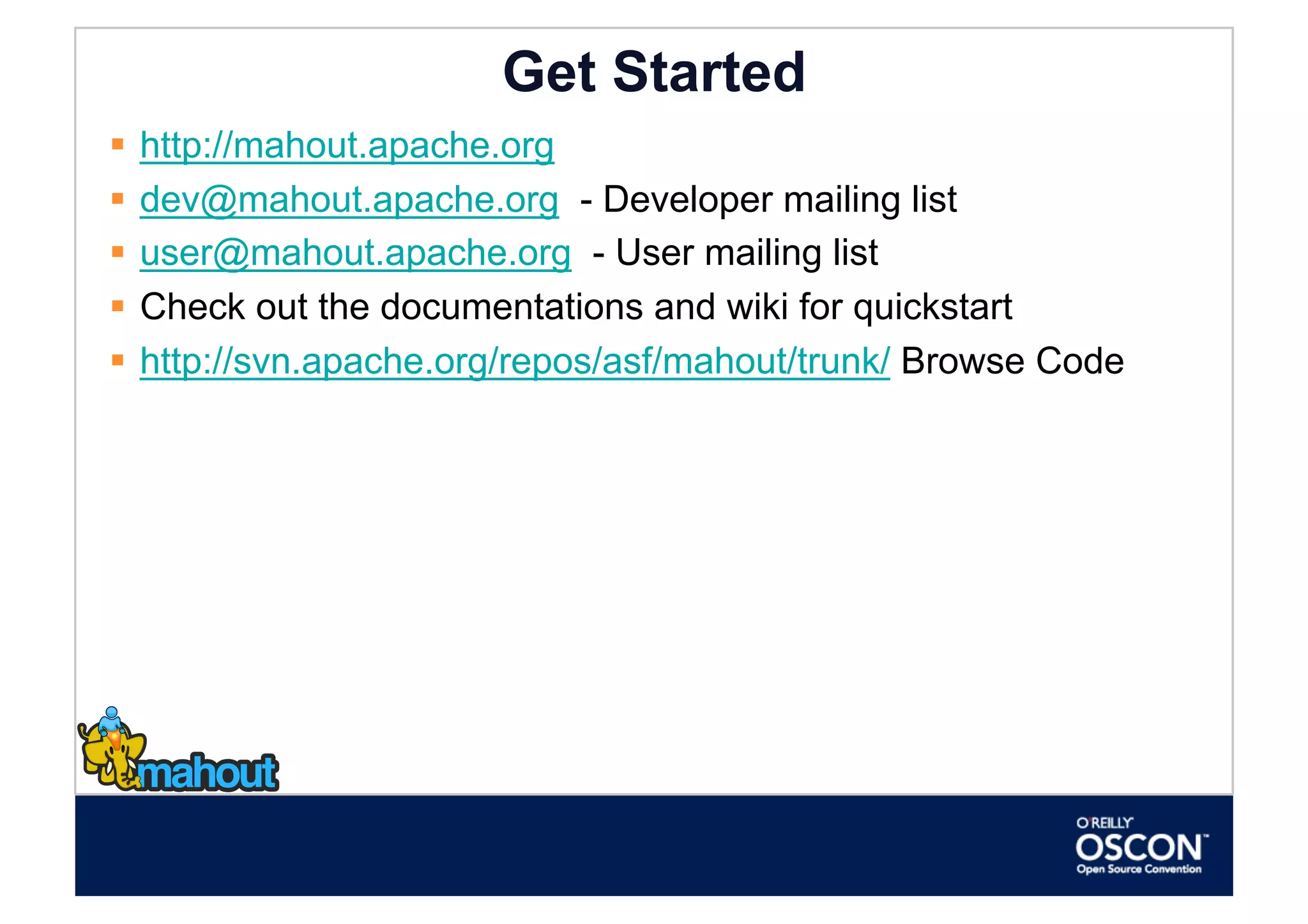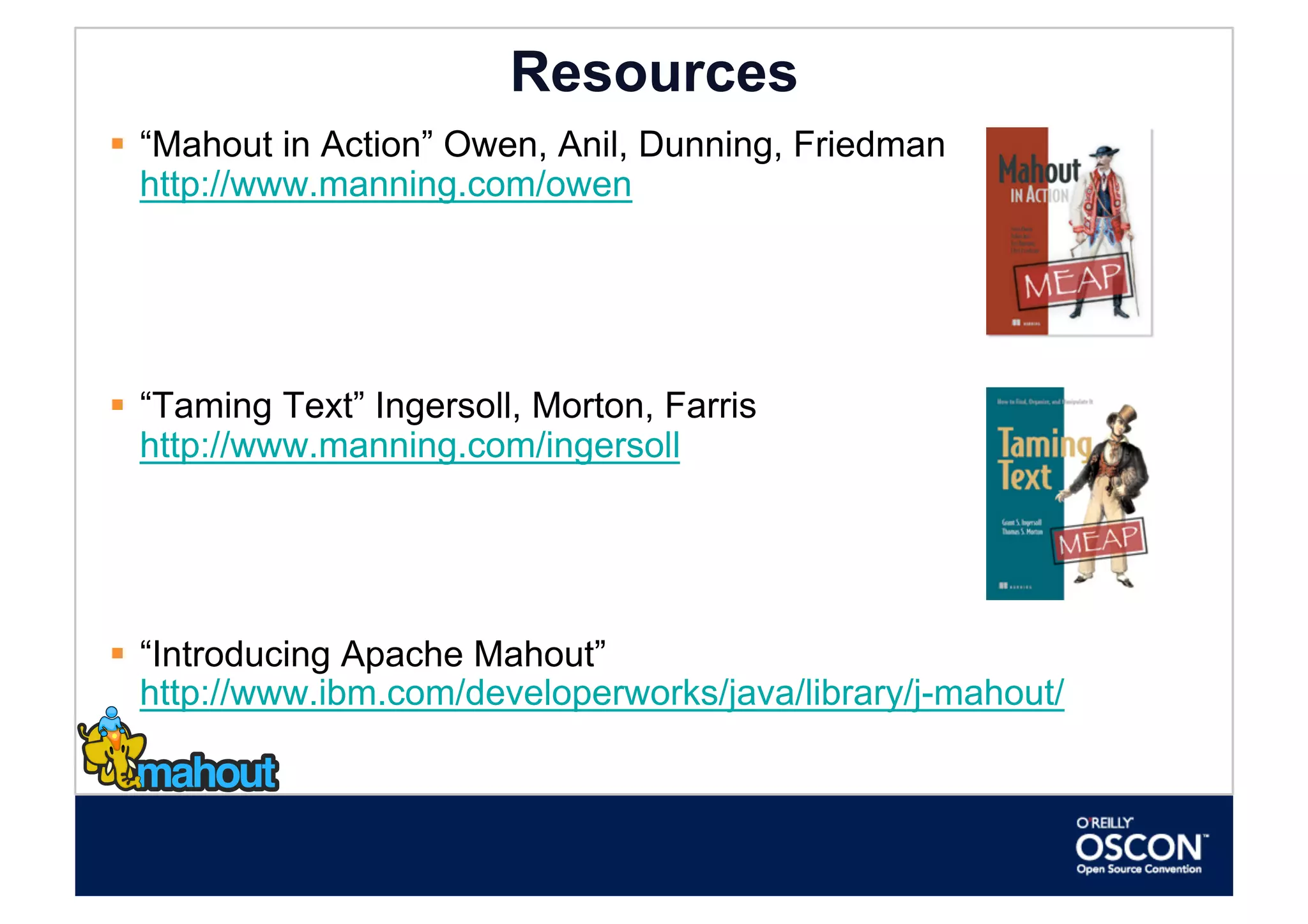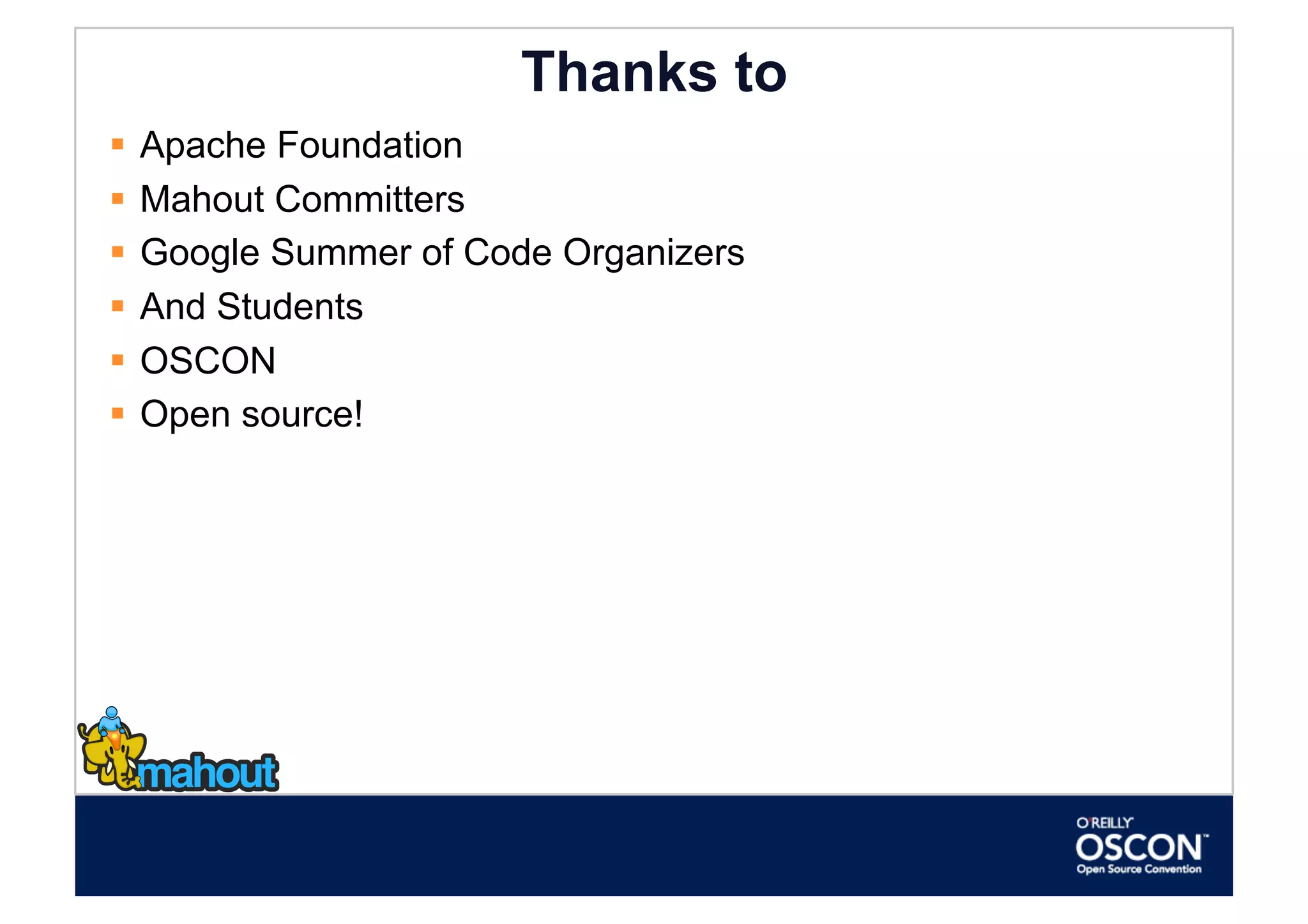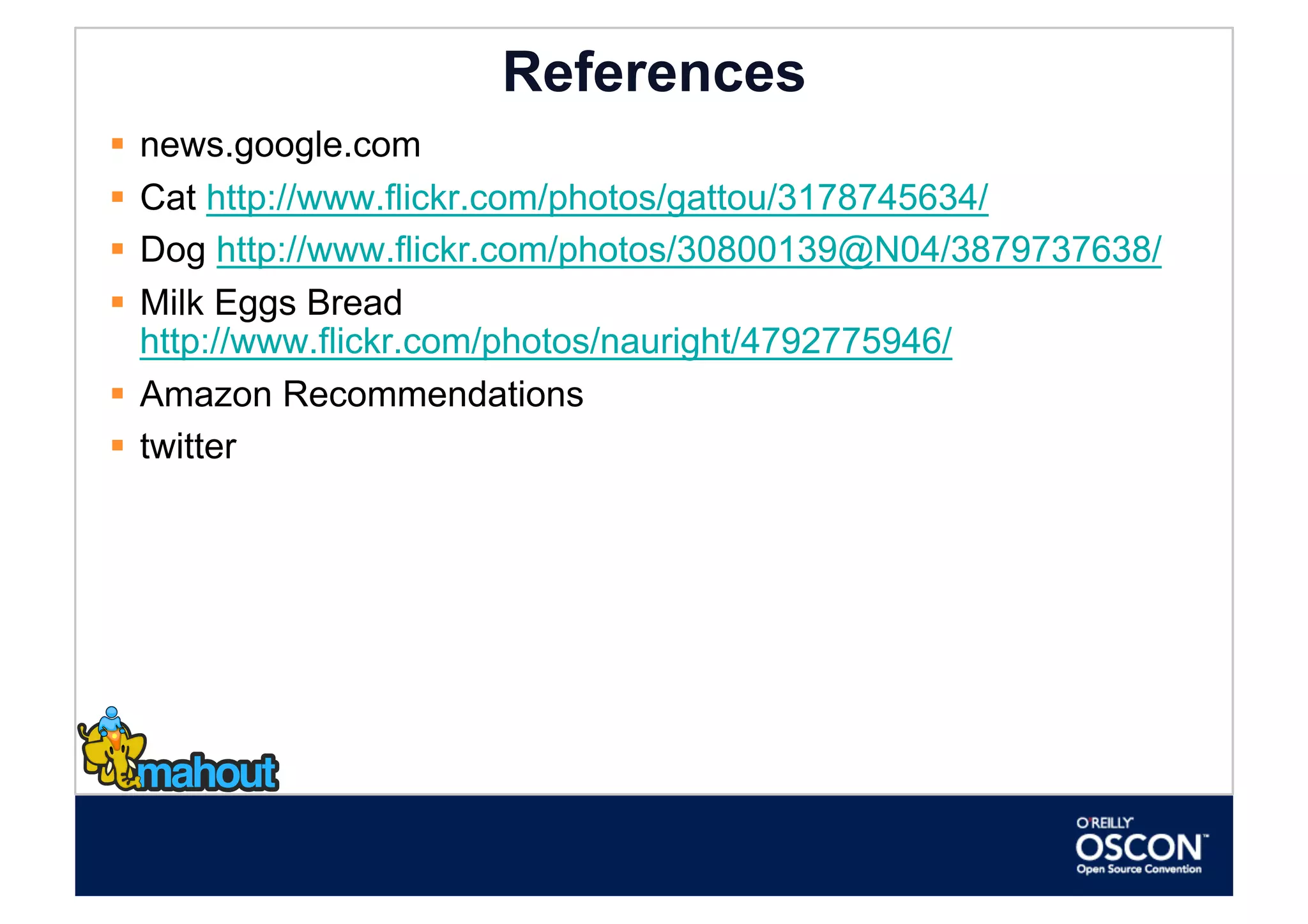The document summarizes a presentation about the Apache Mahout machine learning library. It introduces Mahout and its goal of building a scalable machine learning library. It describes different machine learning problems like clustering, classification, recommendations, and frequent pattern mining that Mahout provides solutions for. It provides examples of how to use Mahout algorithms and a sneak peek at upcoming releases.
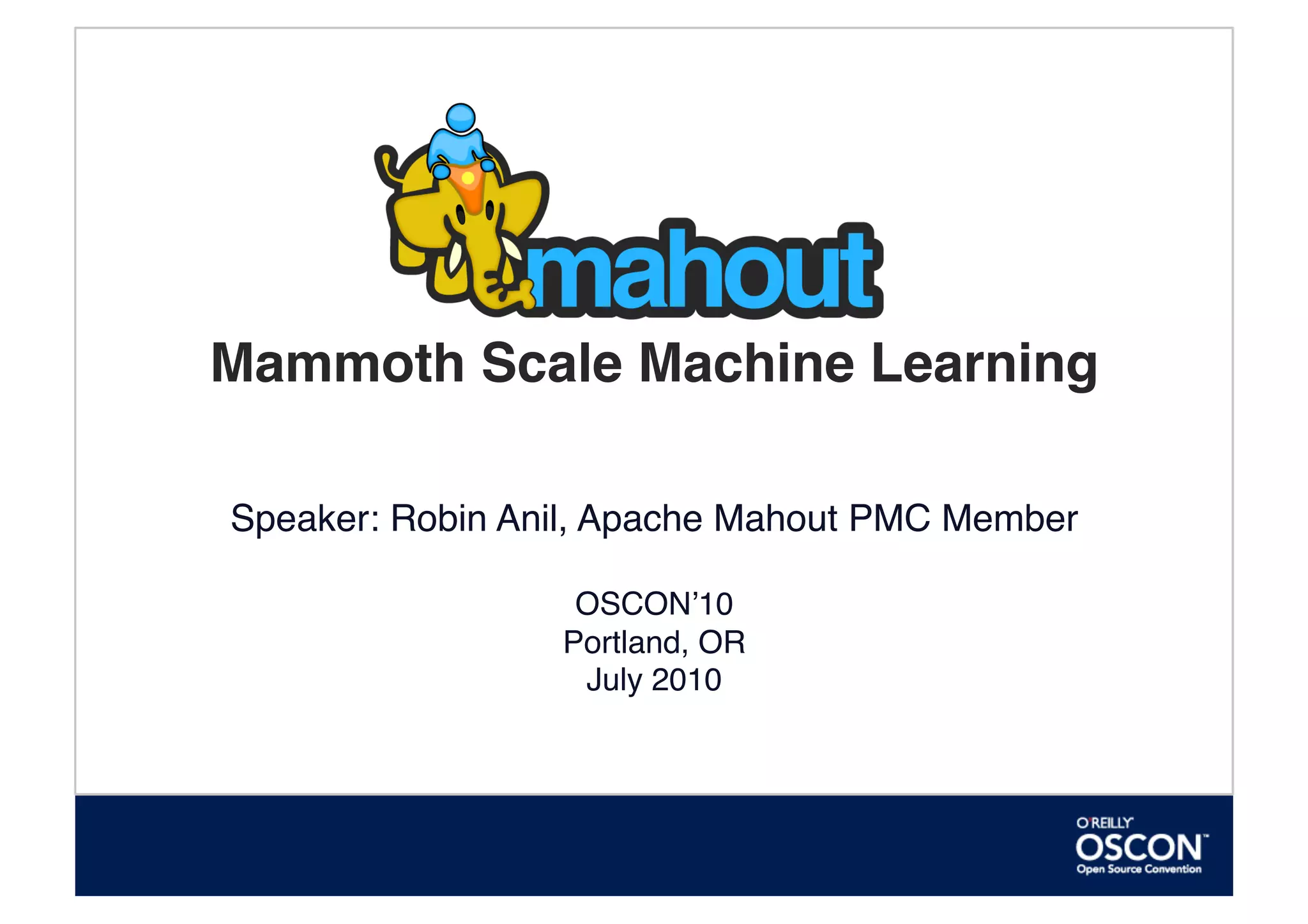
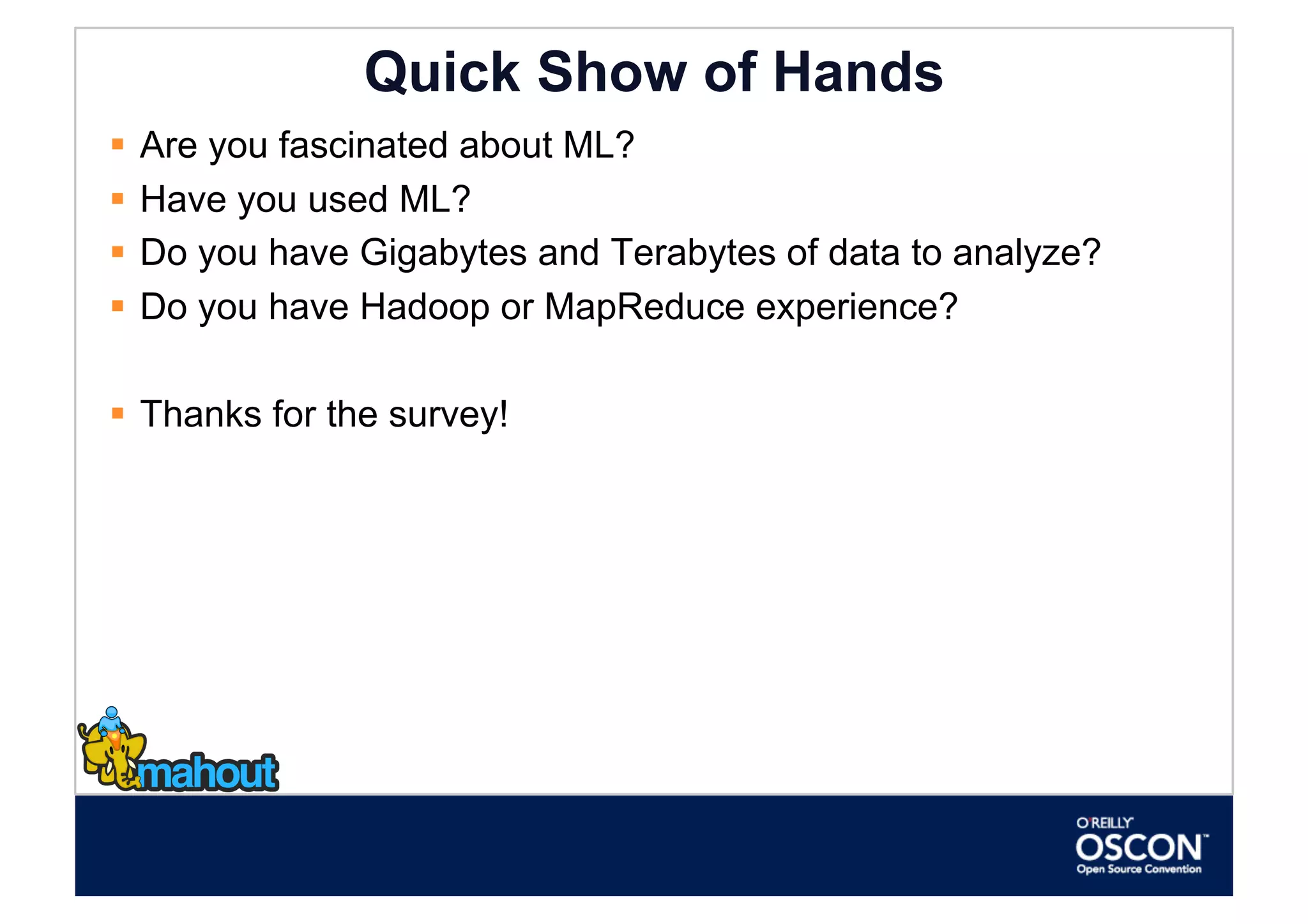
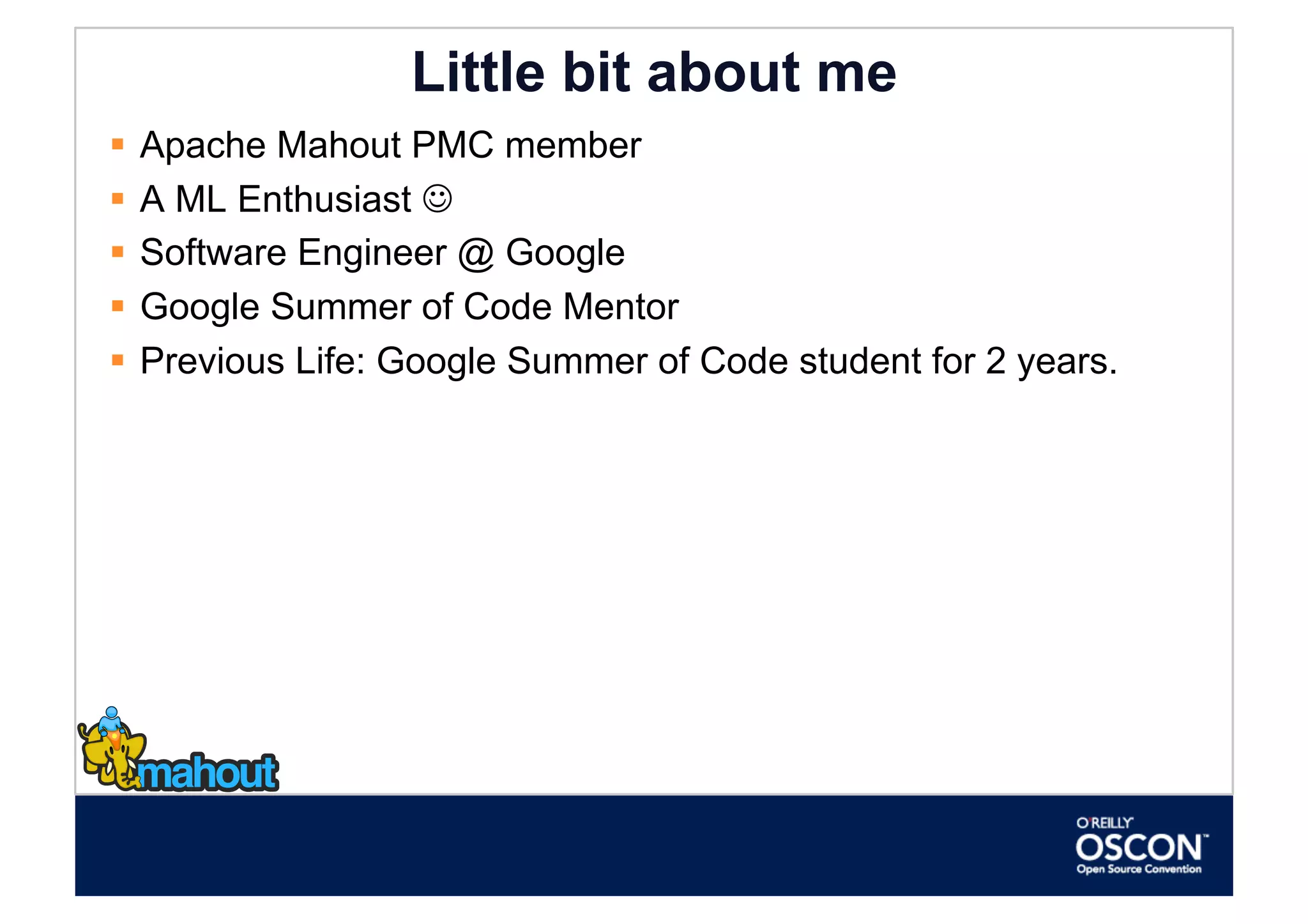
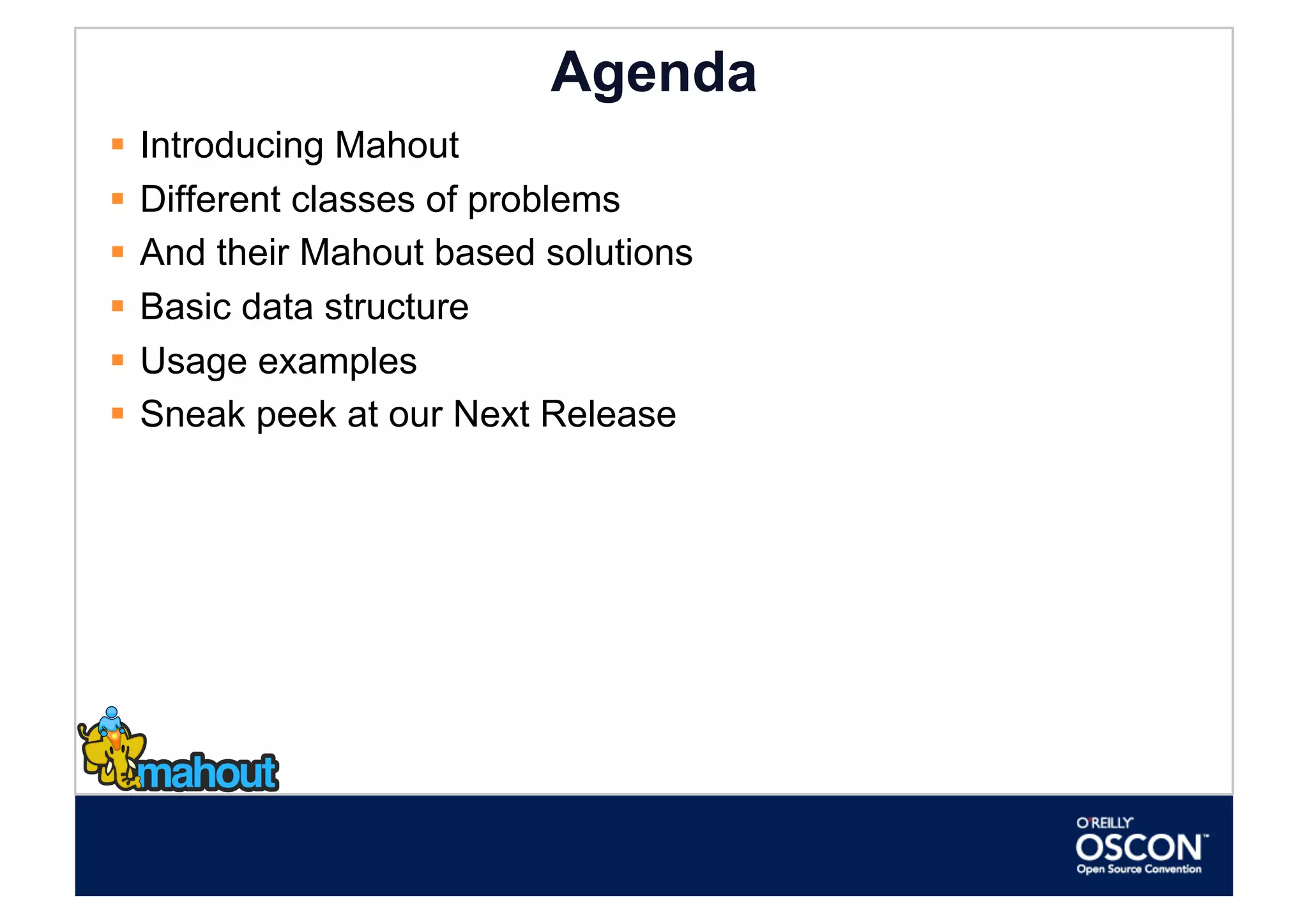
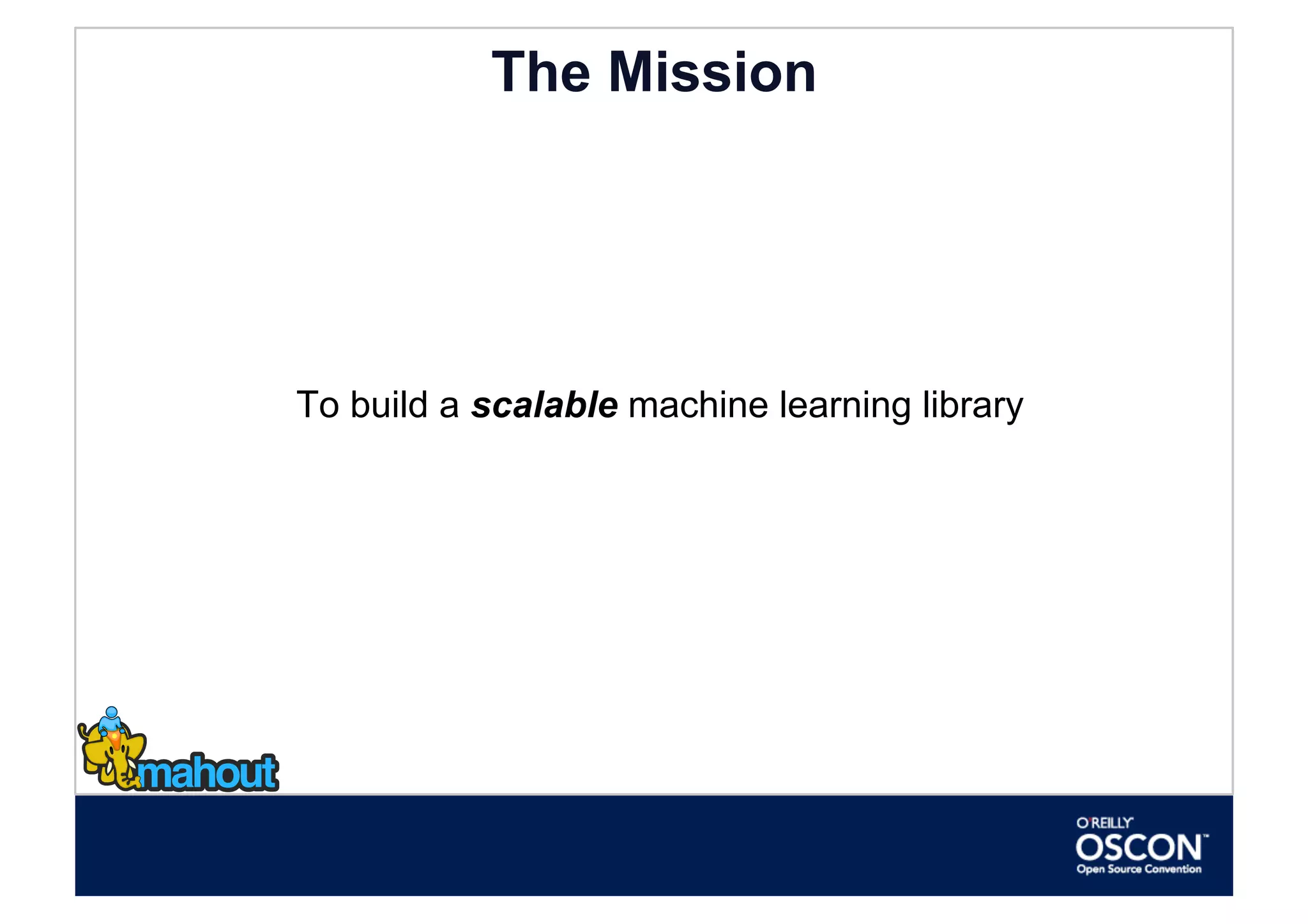
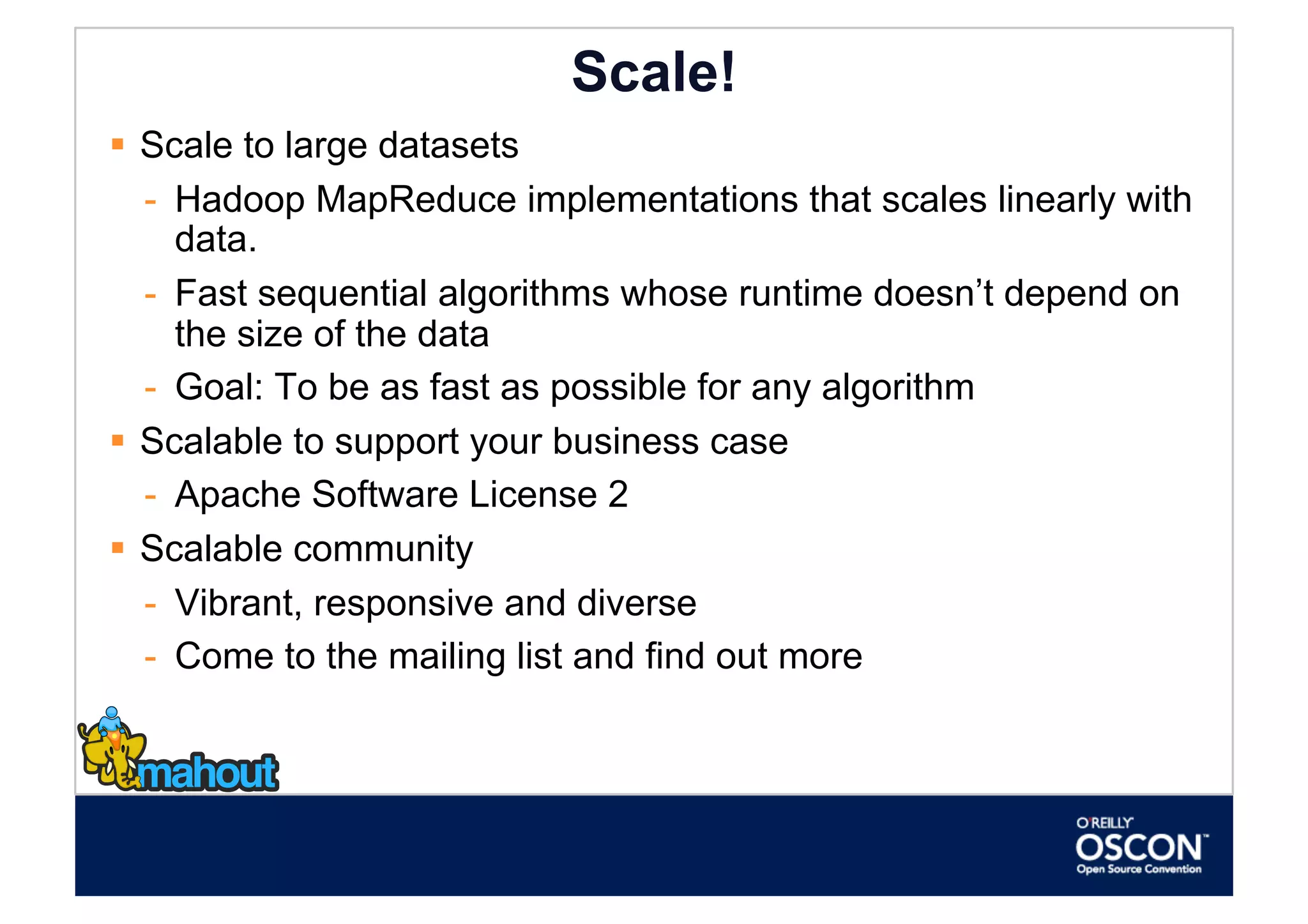
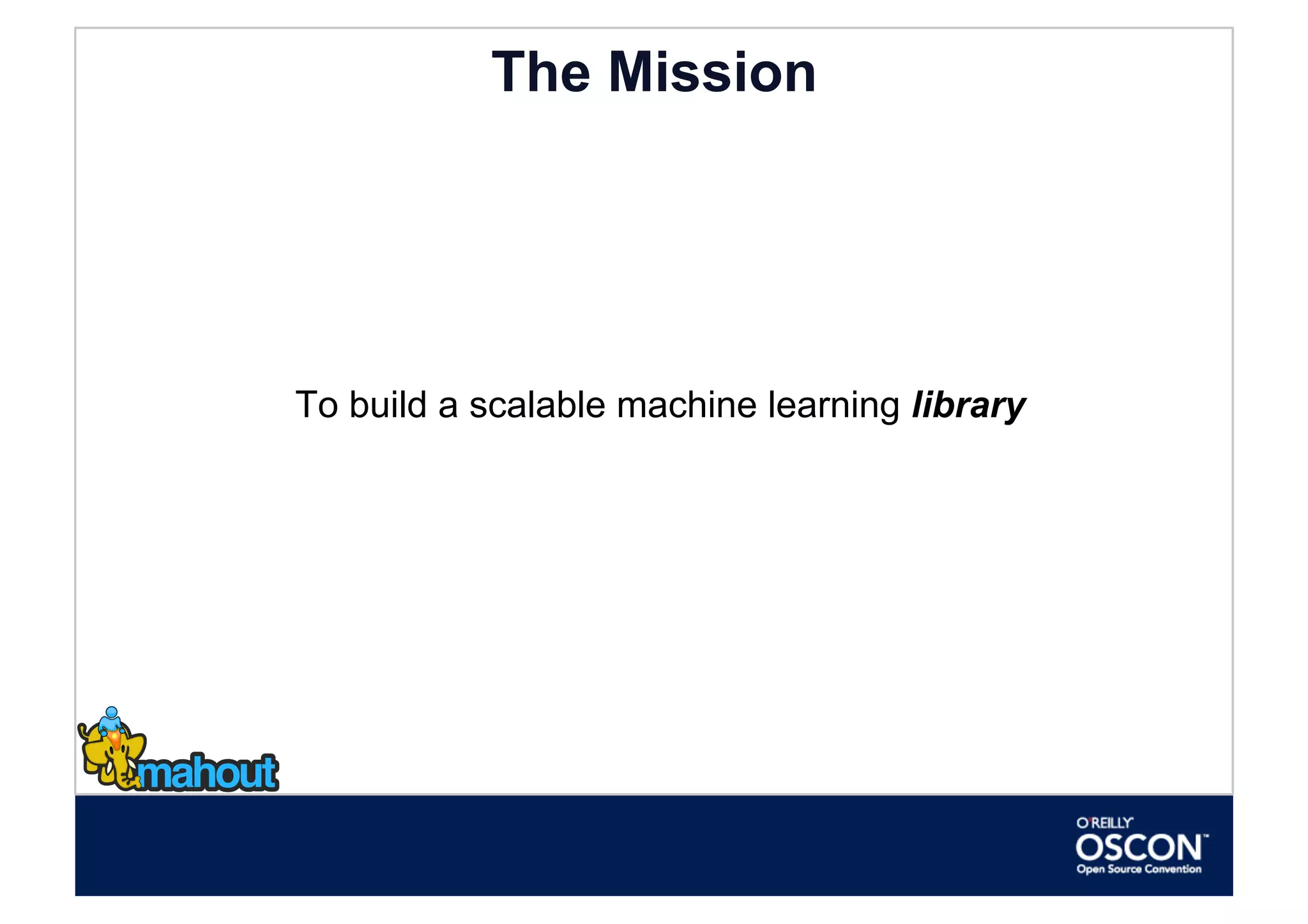

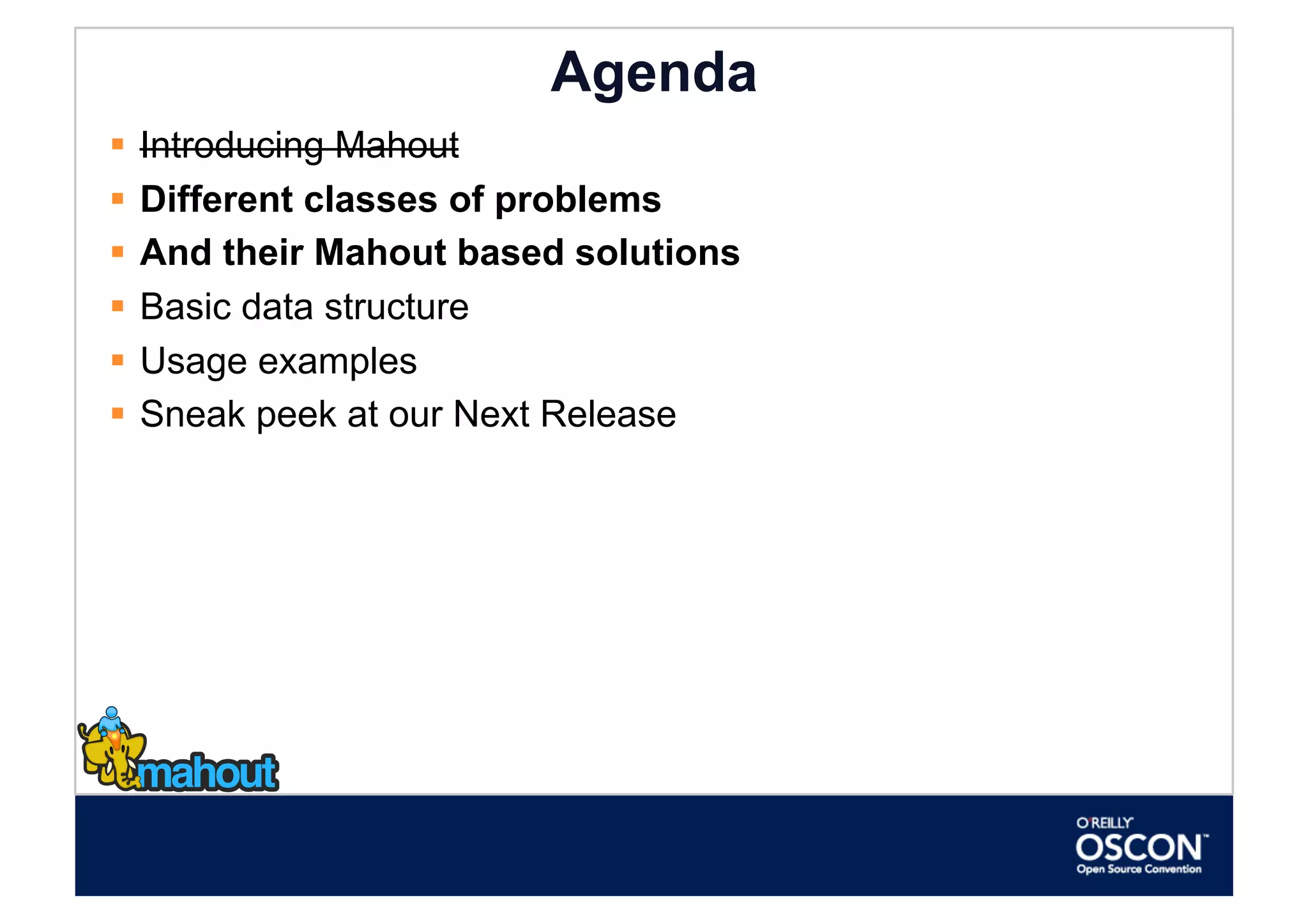
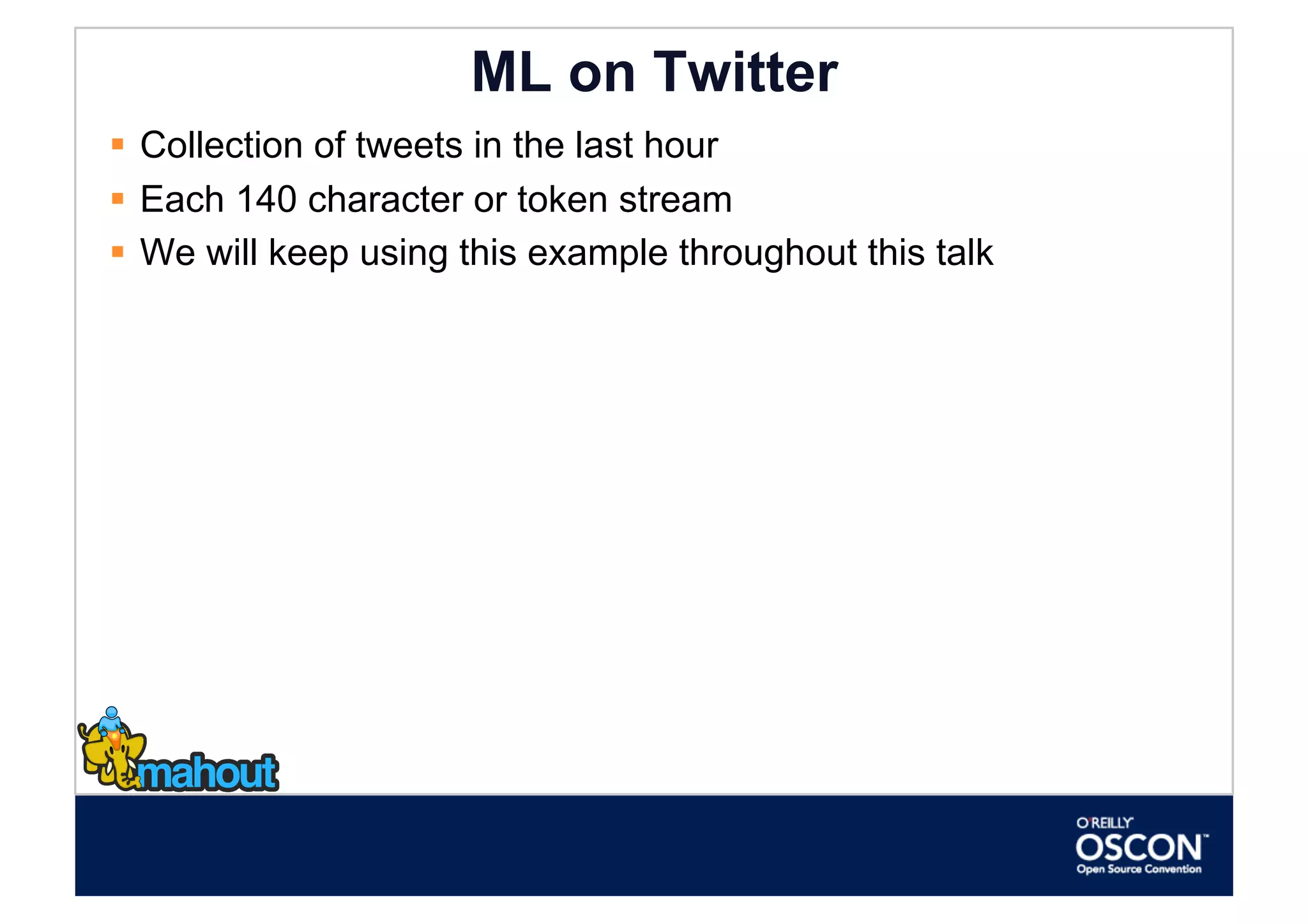
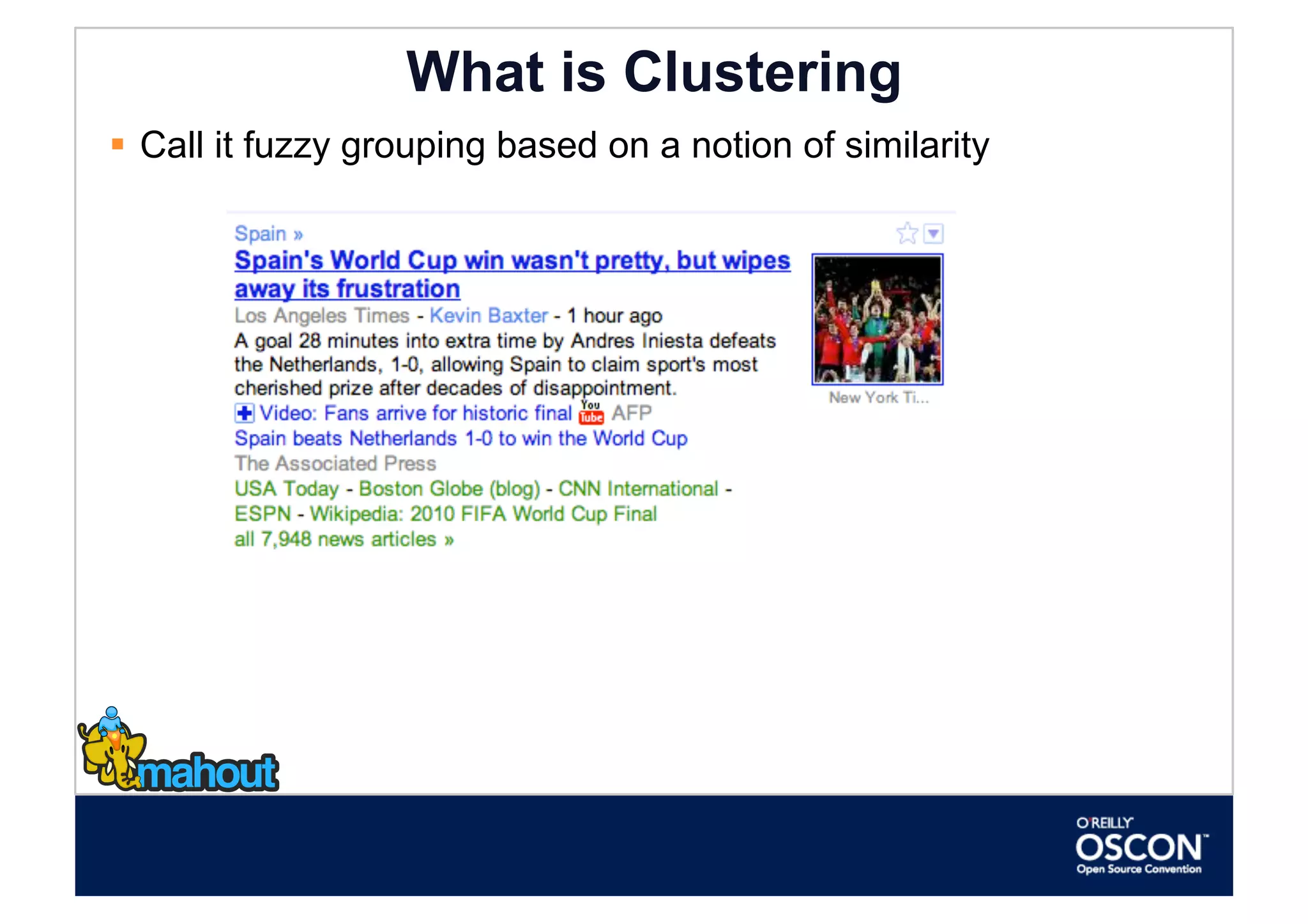
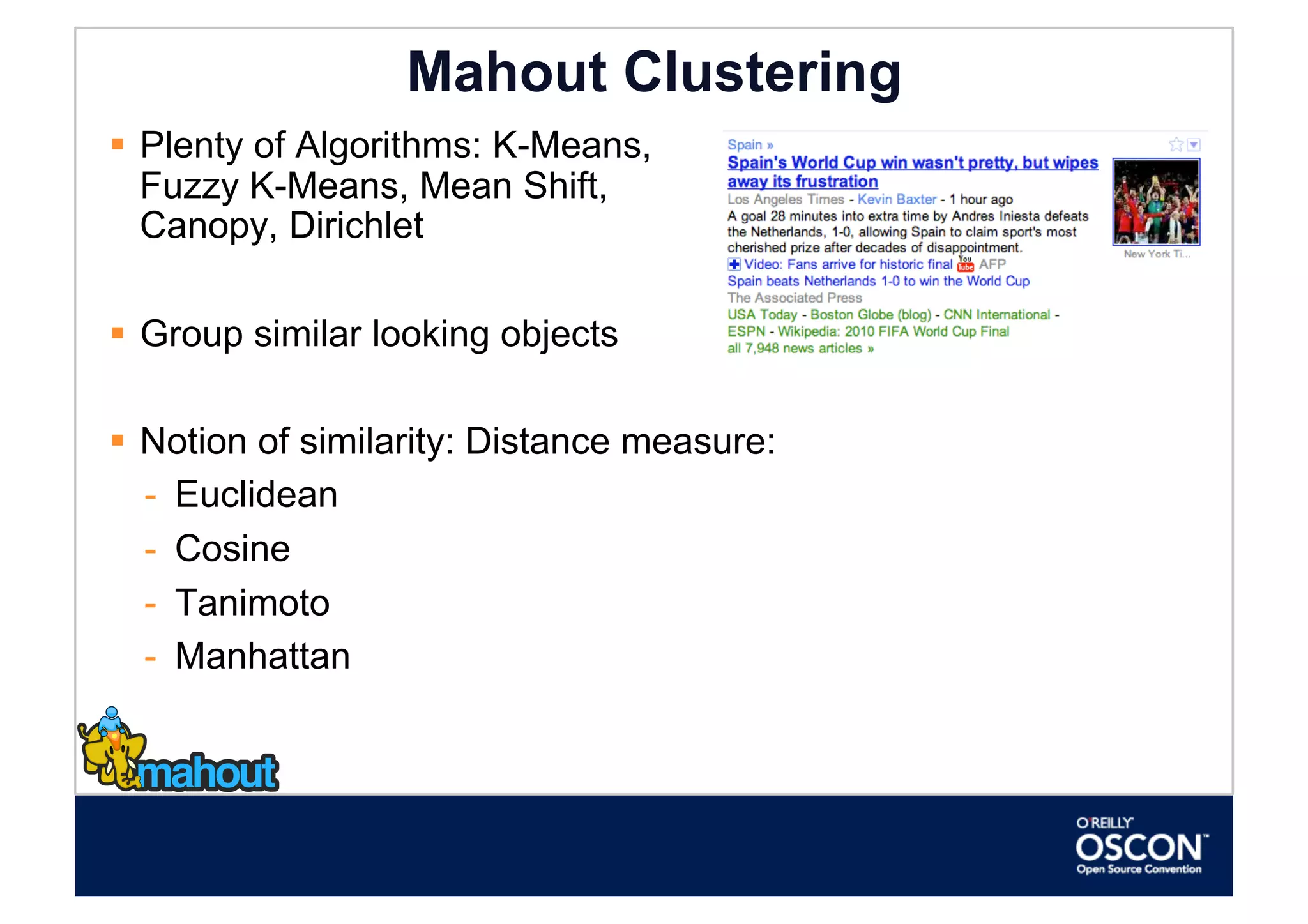
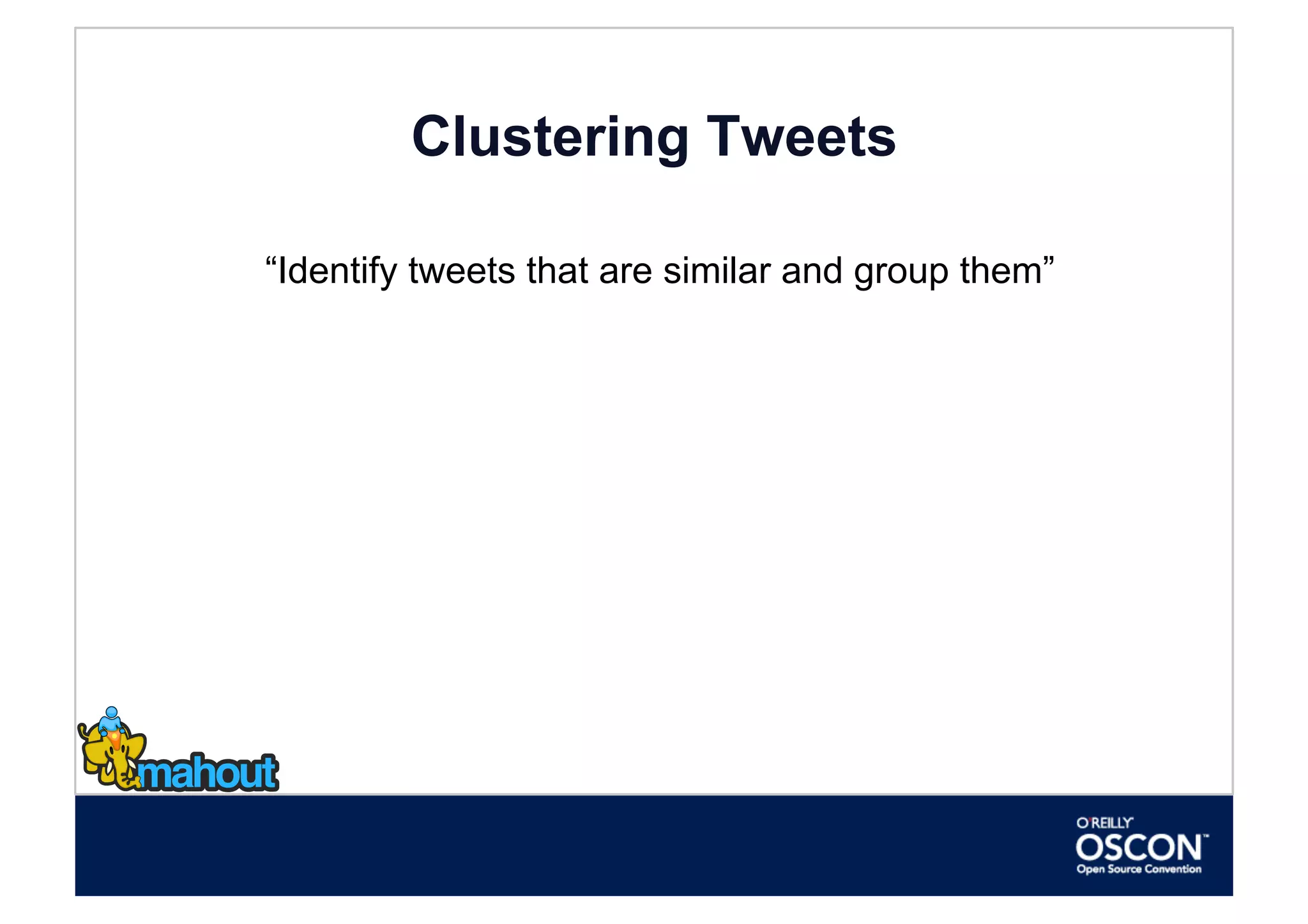
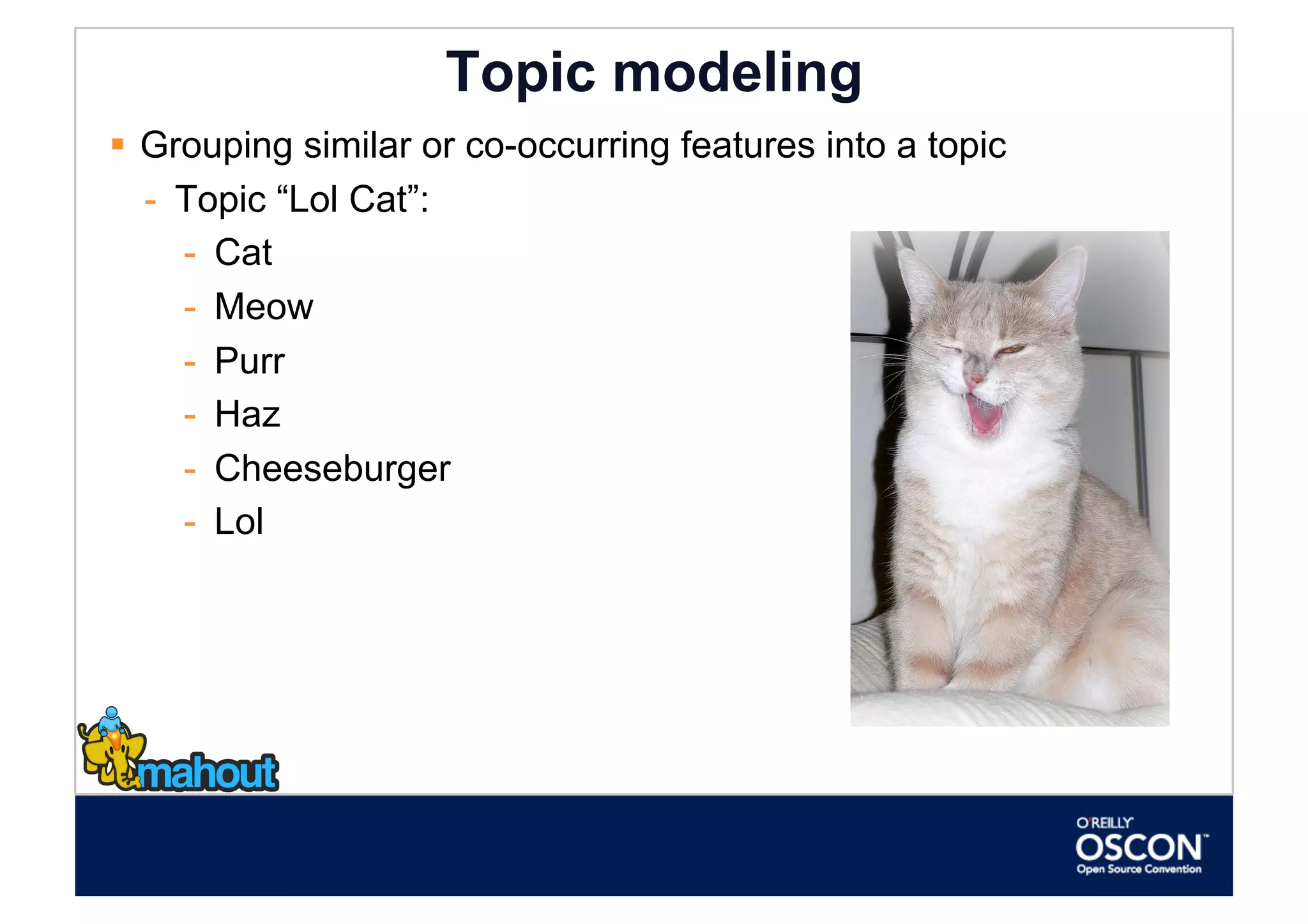
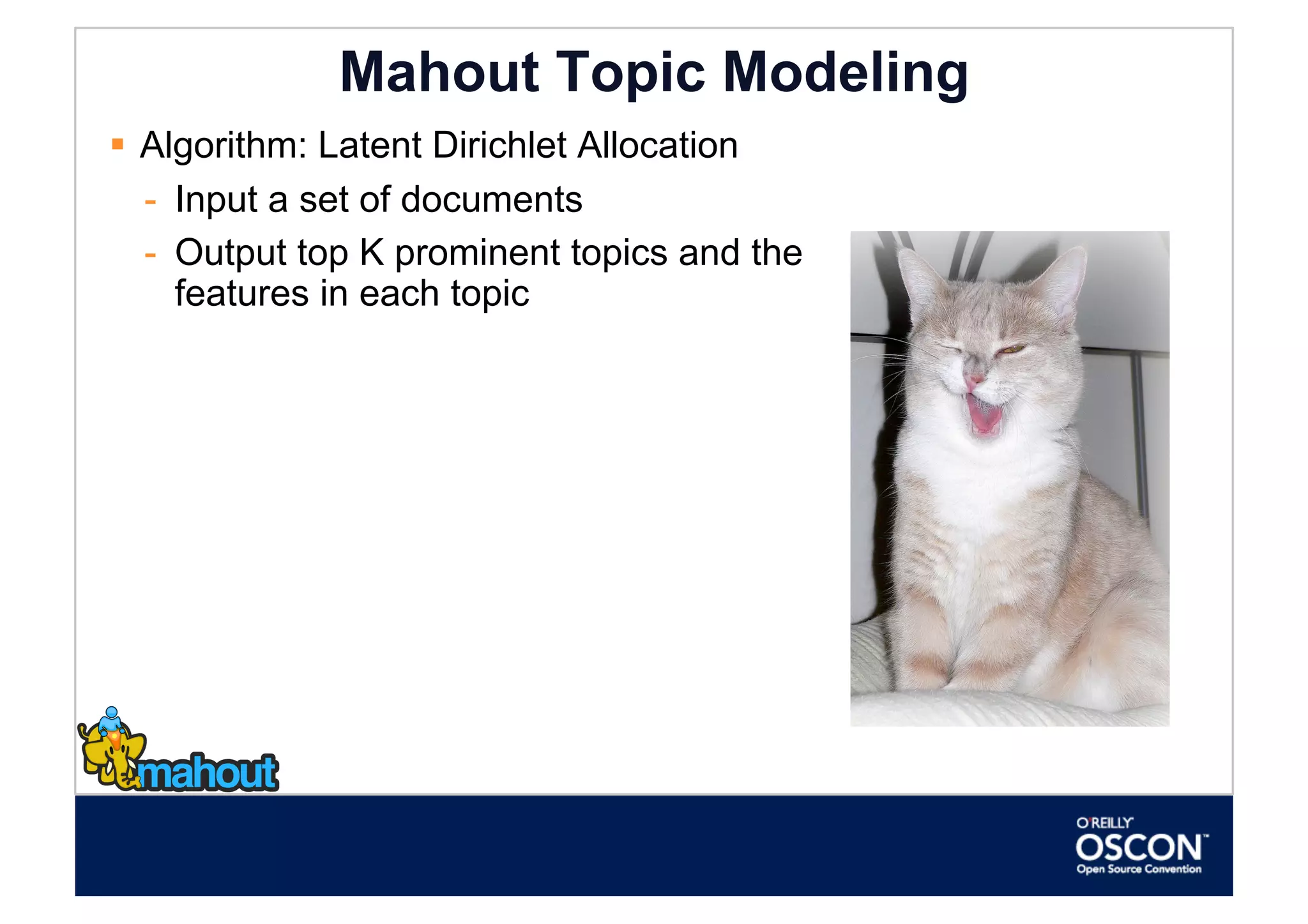
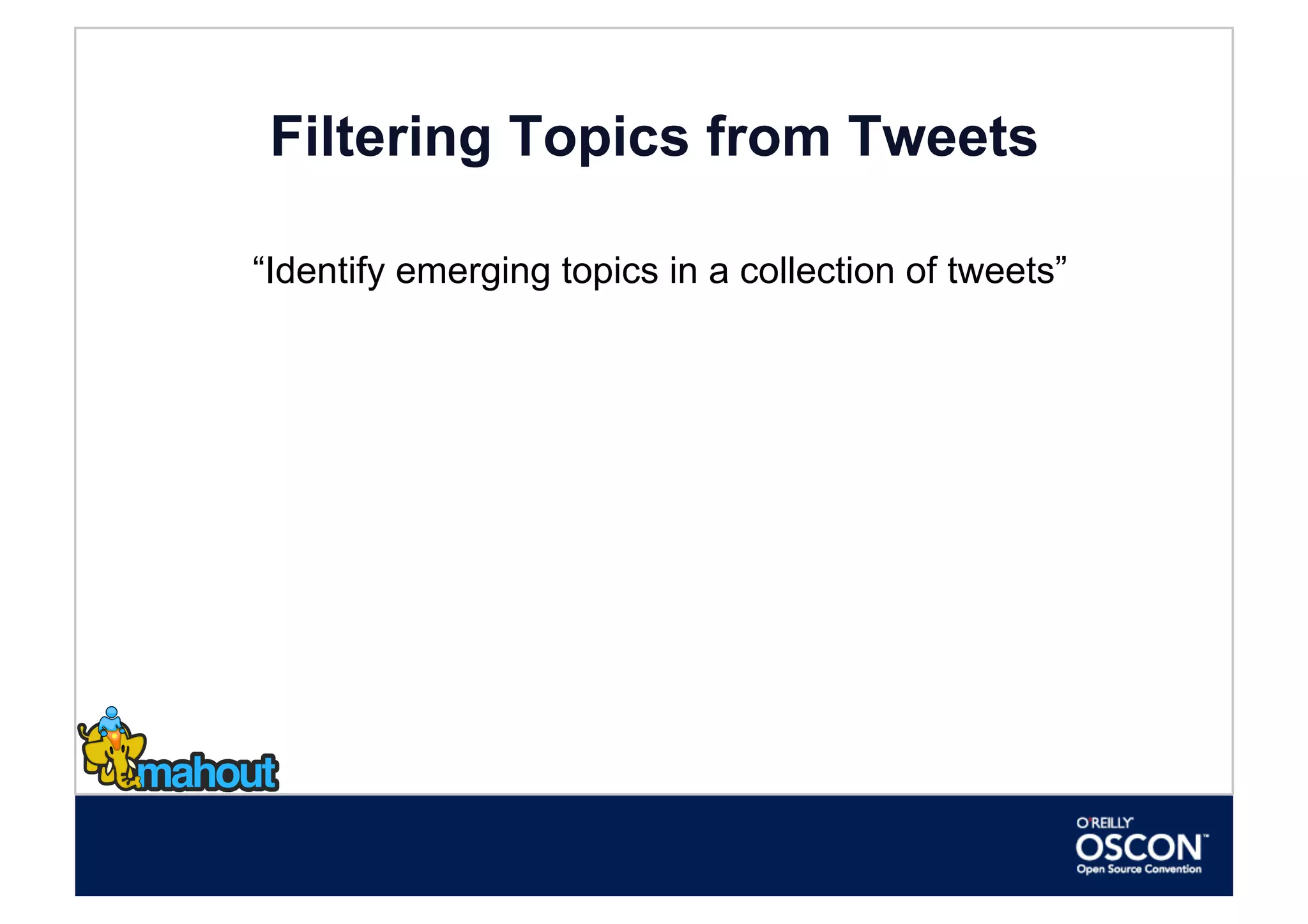
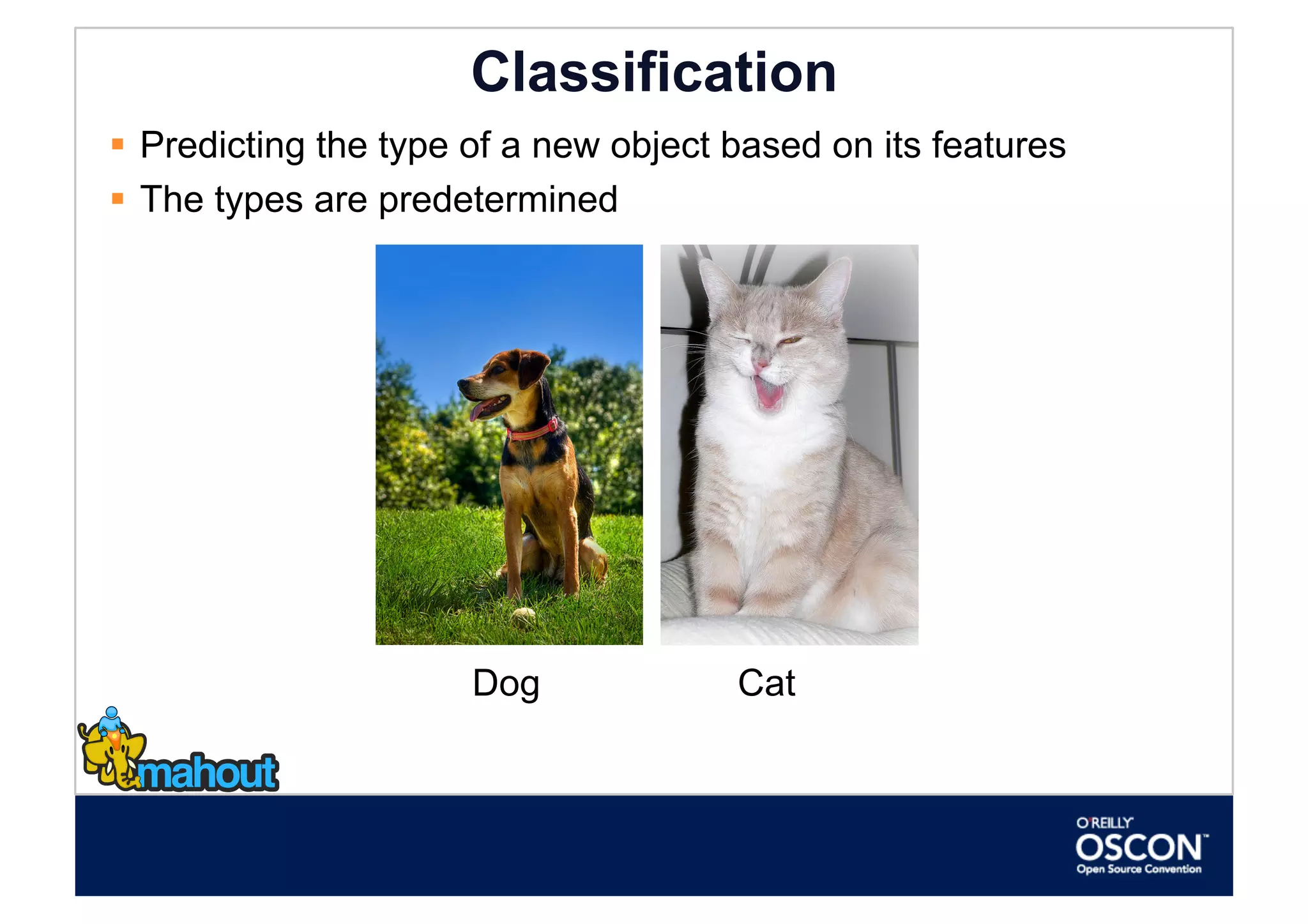
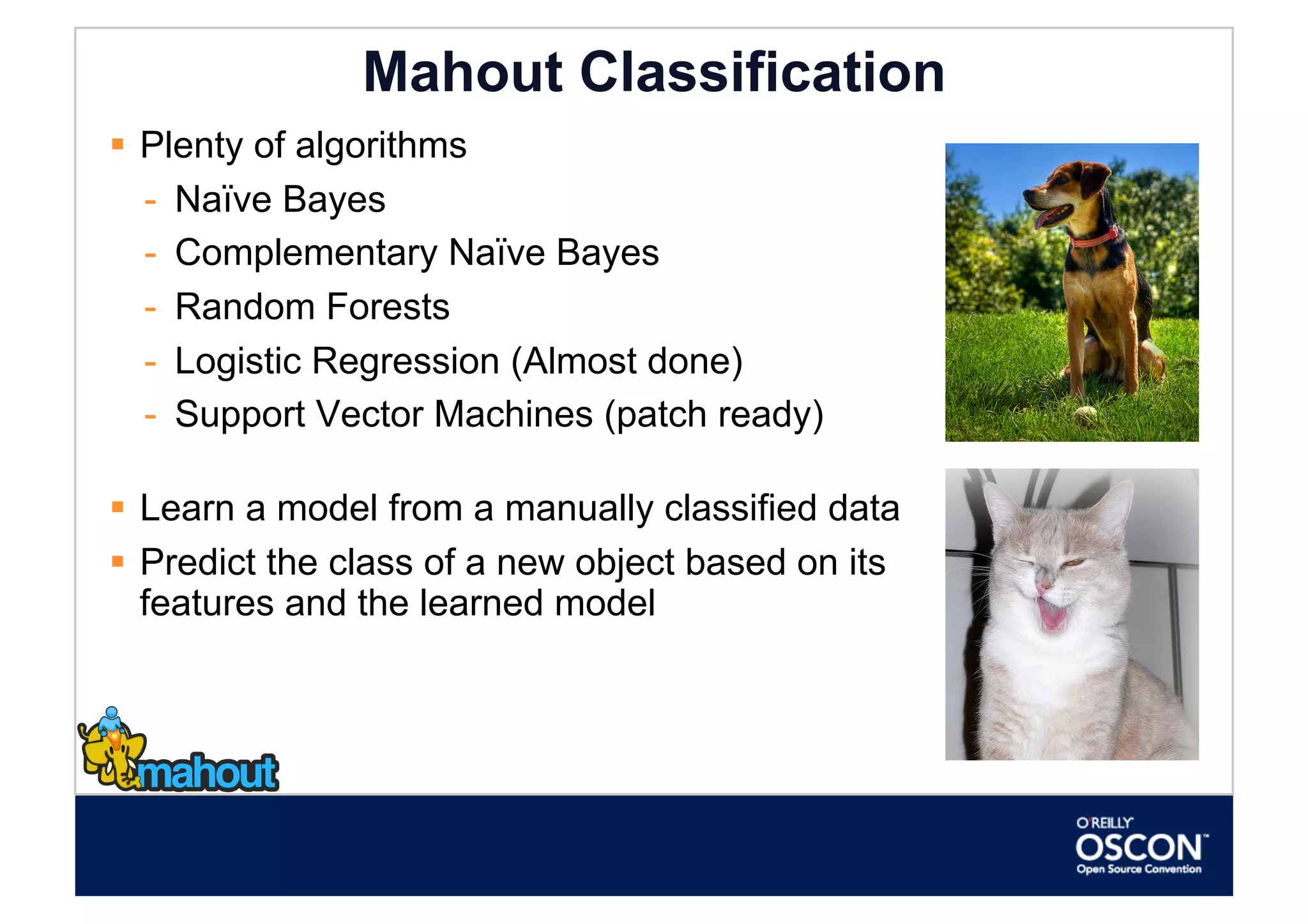
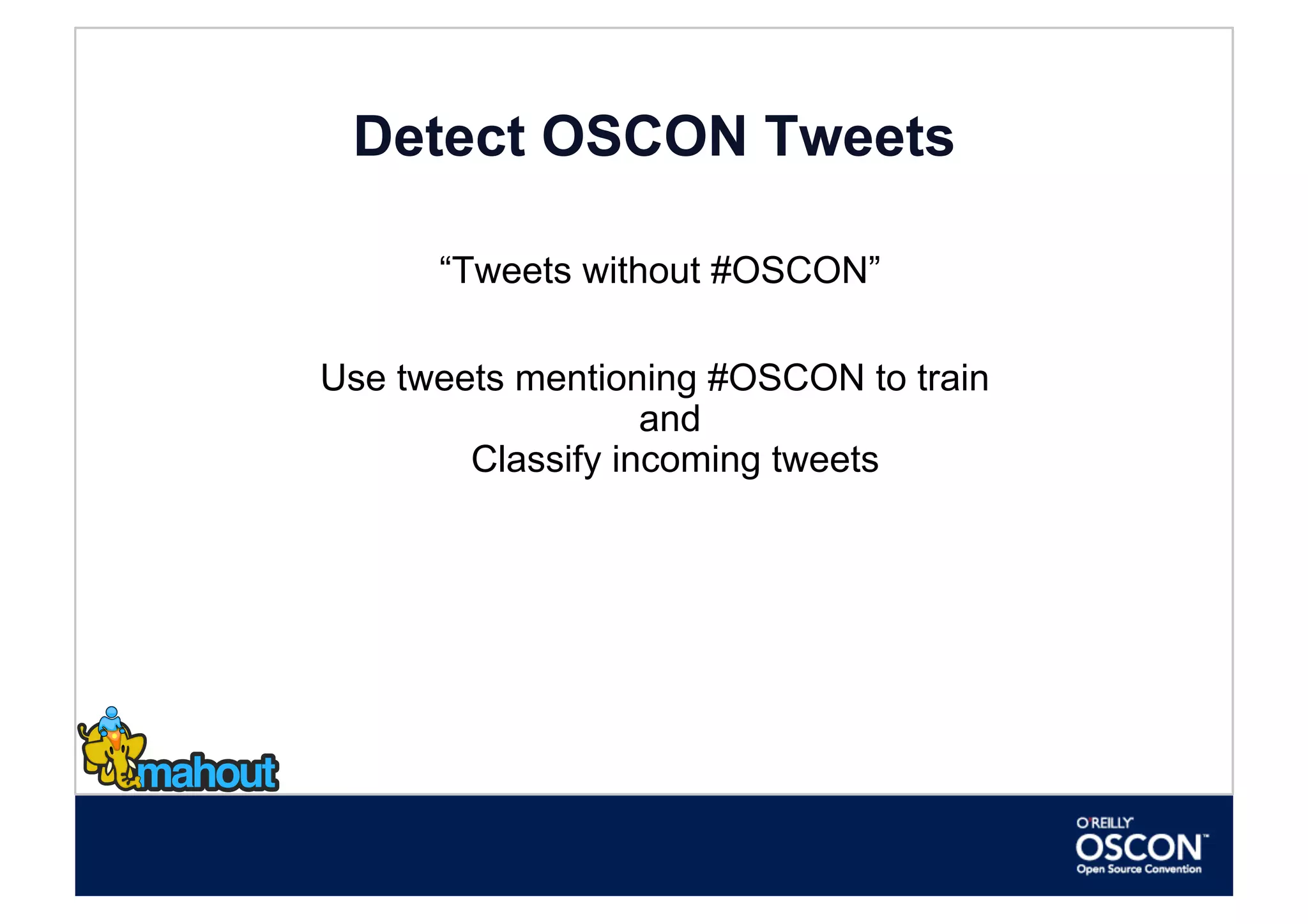

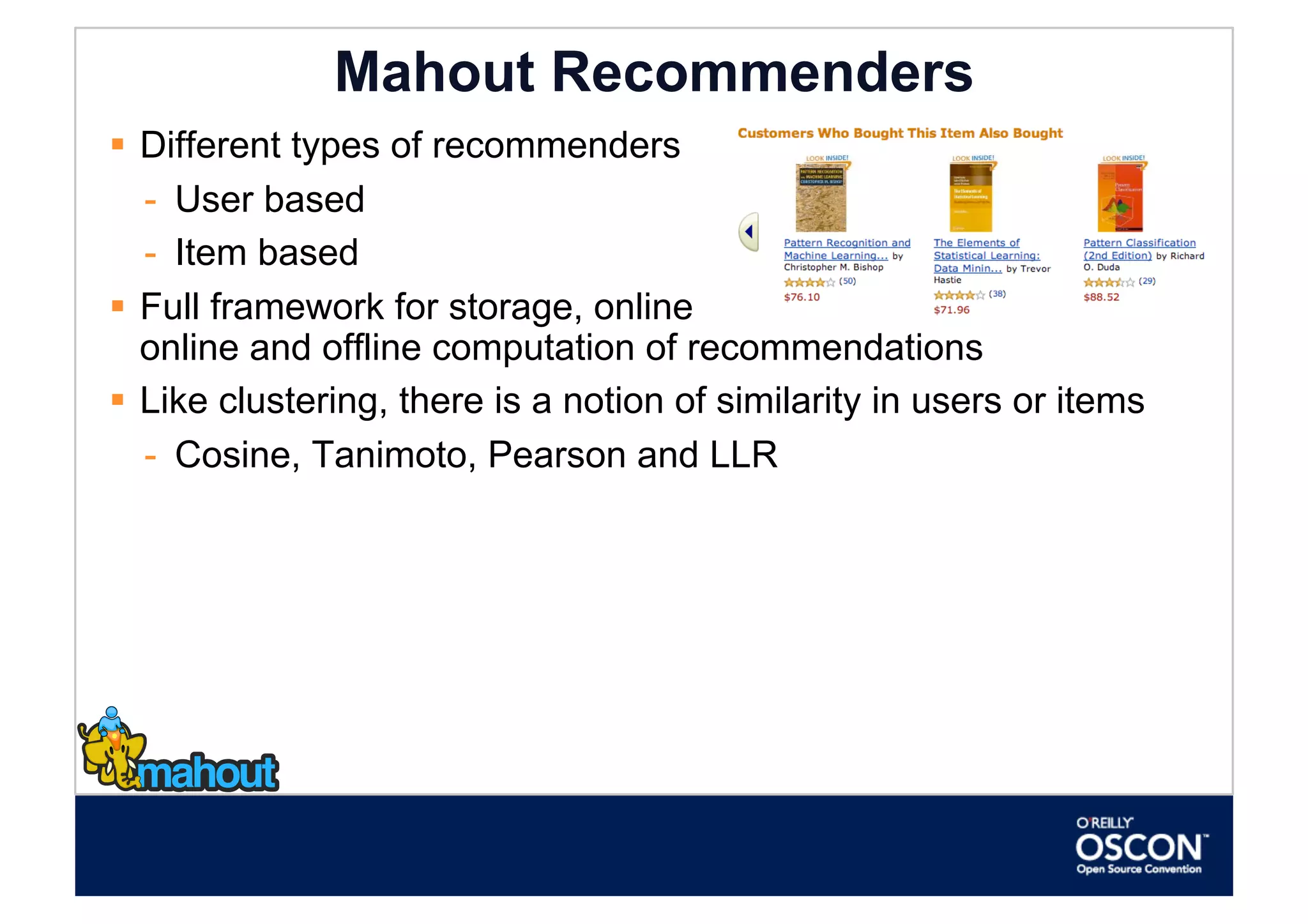
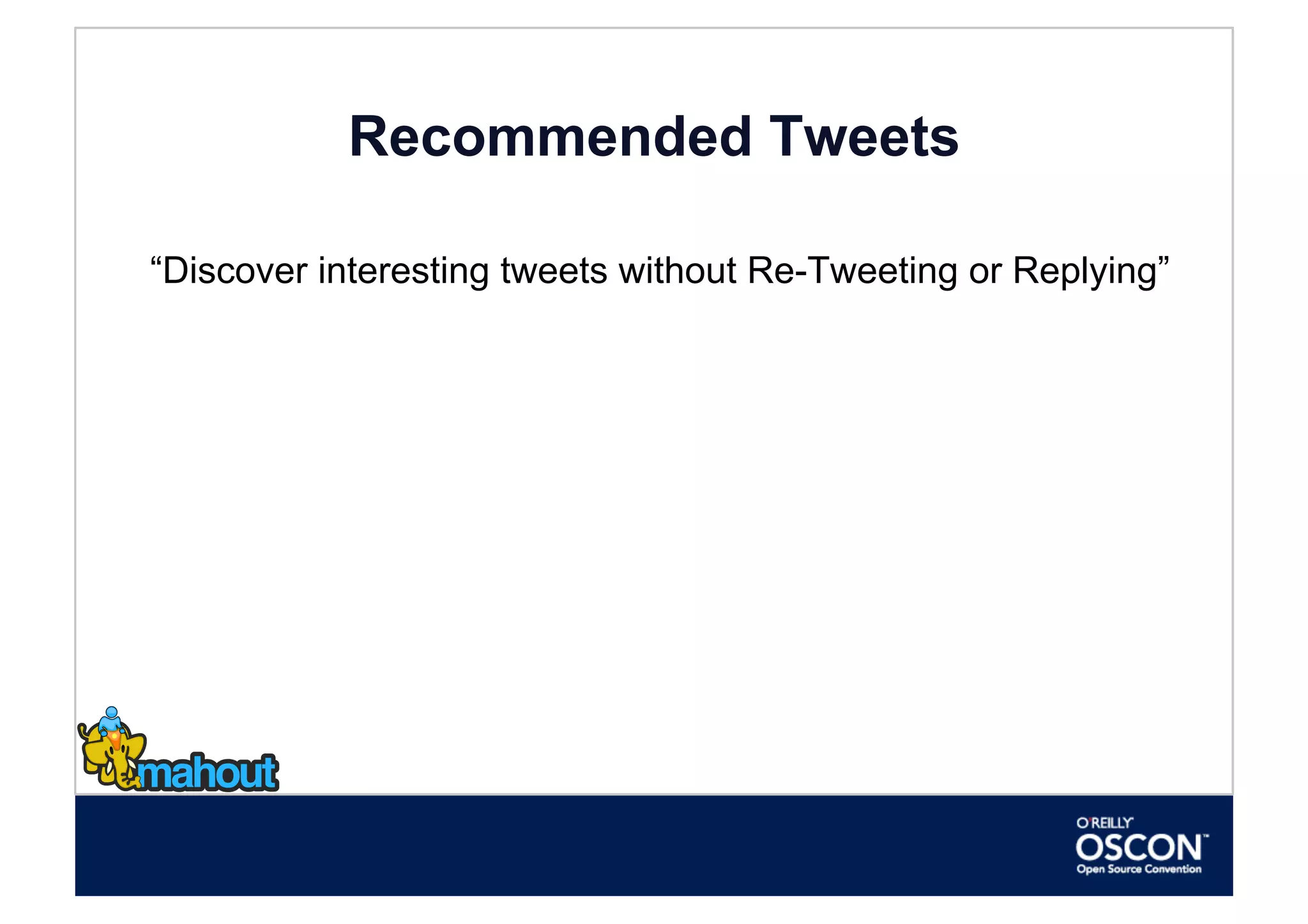
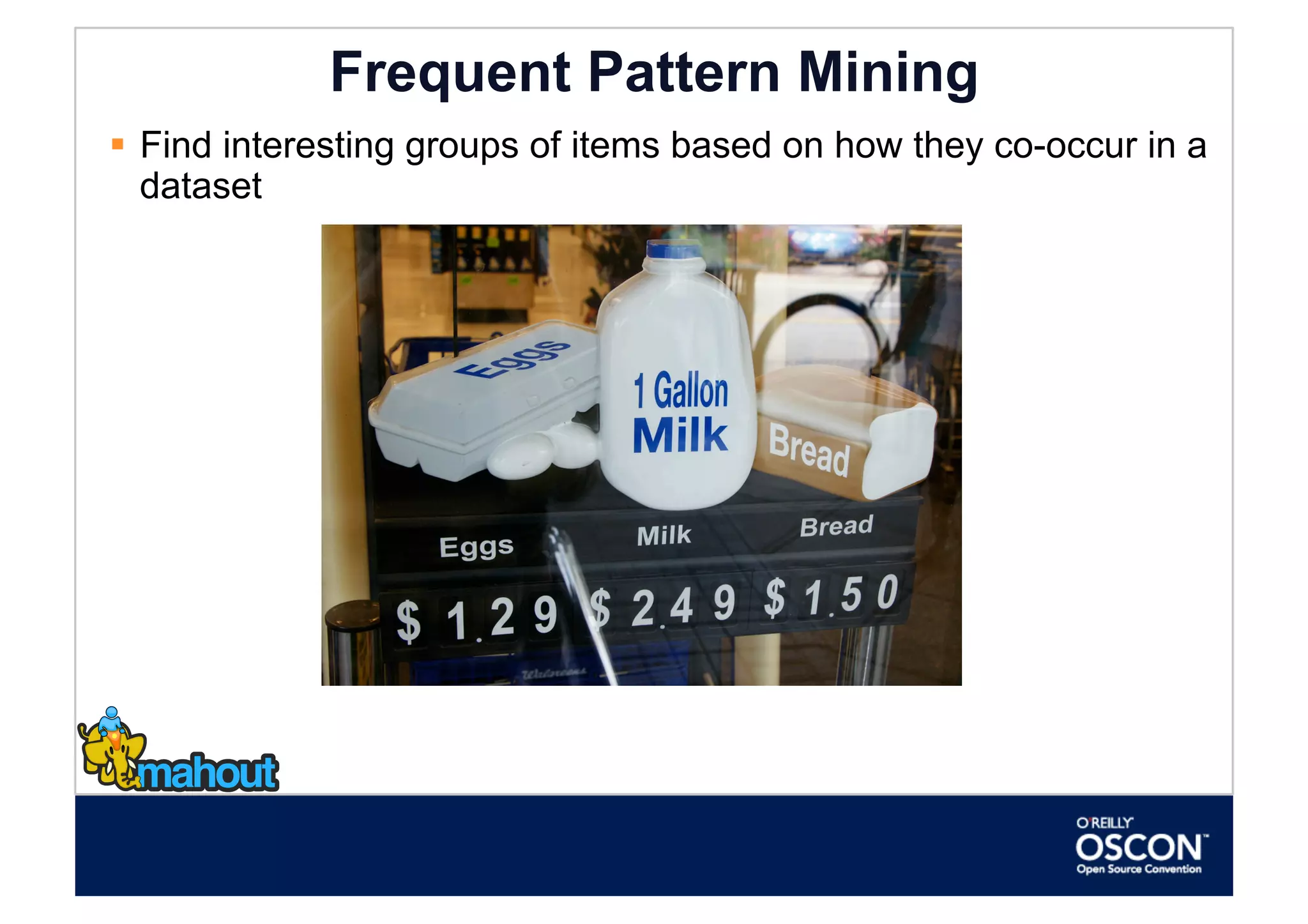
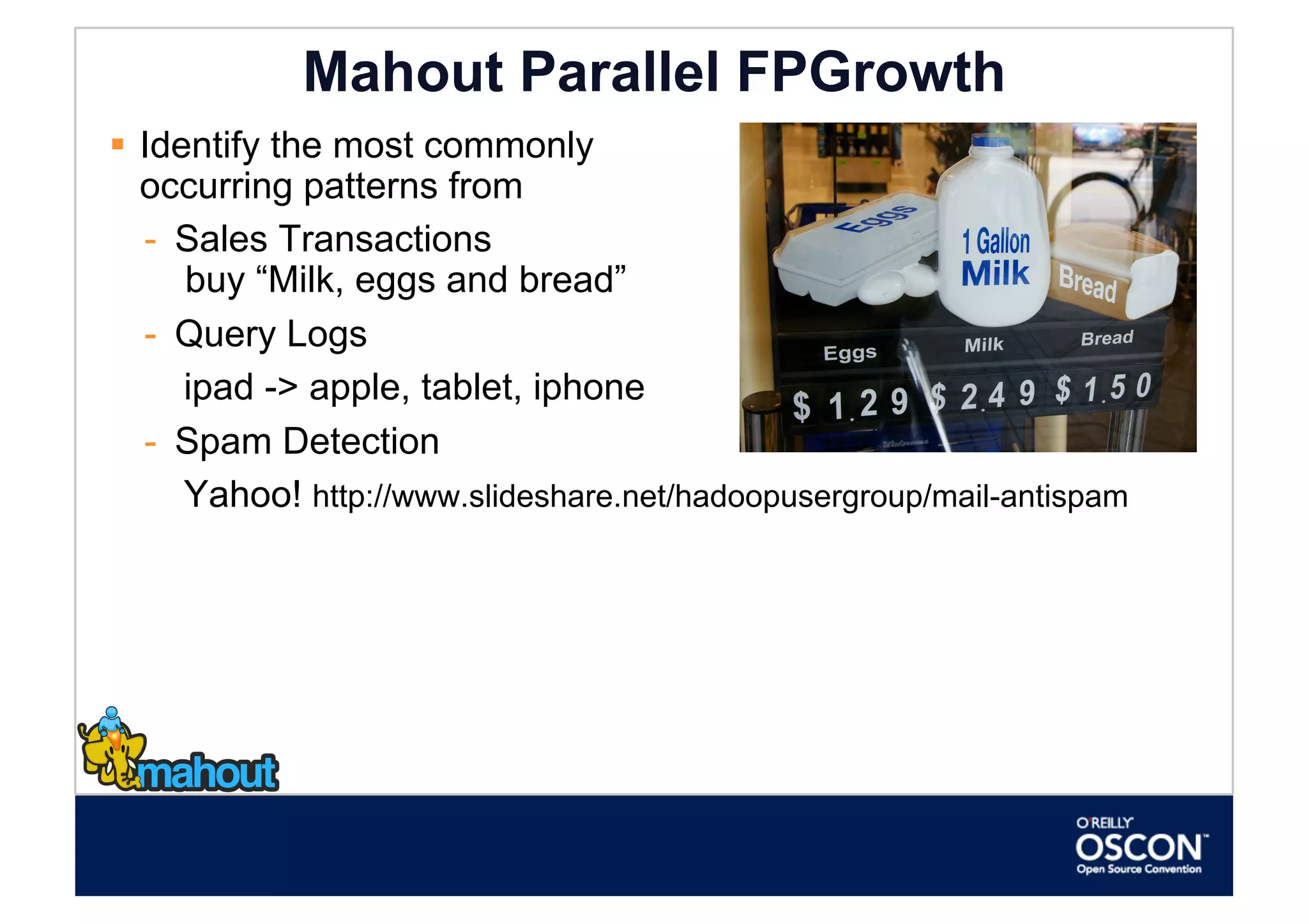
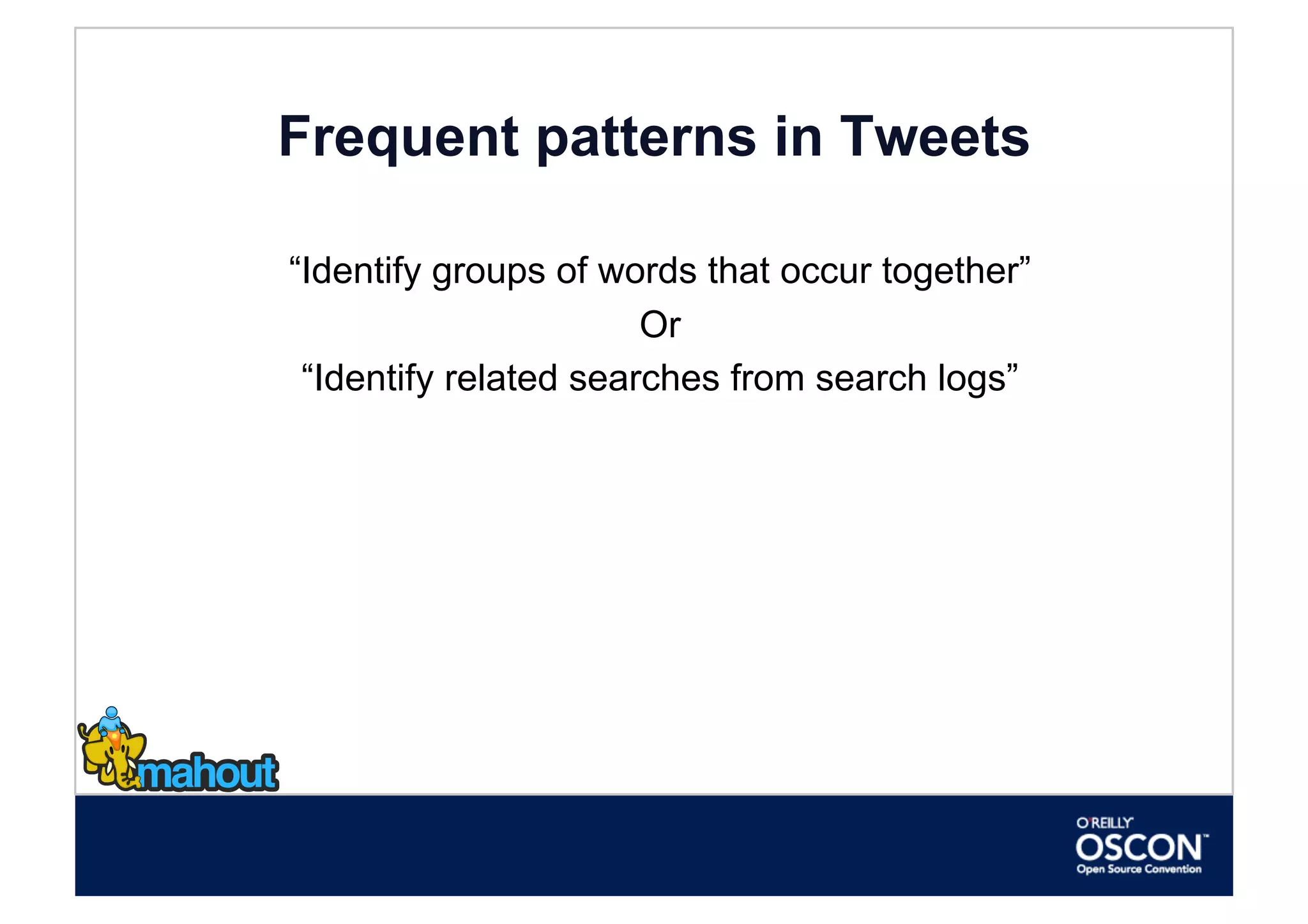
![Mahout is Evolving
Mapreduce enabled fitness functions for Genetic programming
- Integration with Watchmaker
- Solves: Travelling salesman, class discovery and many others
Singular Value decomposition [SVD] of large matrices
- Reduce a large matrix into a smaller one by identifying the key
rows and columns and discarding the others
- Mapreduce implementation of Lanczos algorithm](https://image.slidesharecdn.com/mahoutoscon-final-100722201843-phpapp01/75/OSCON-Apache-Mahout-Mammoth-Scale-Machine-Learning-26-2048.jpg)
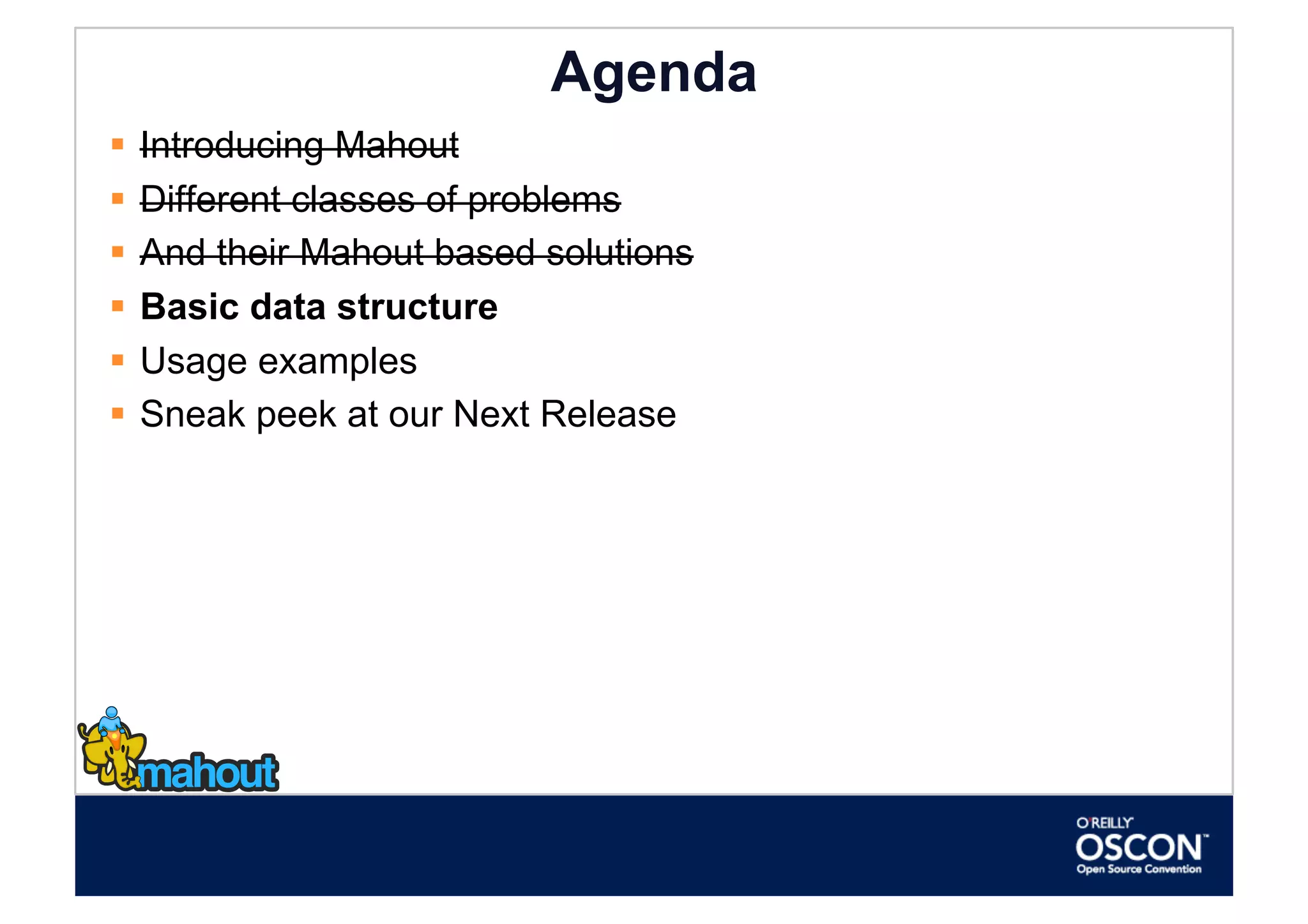
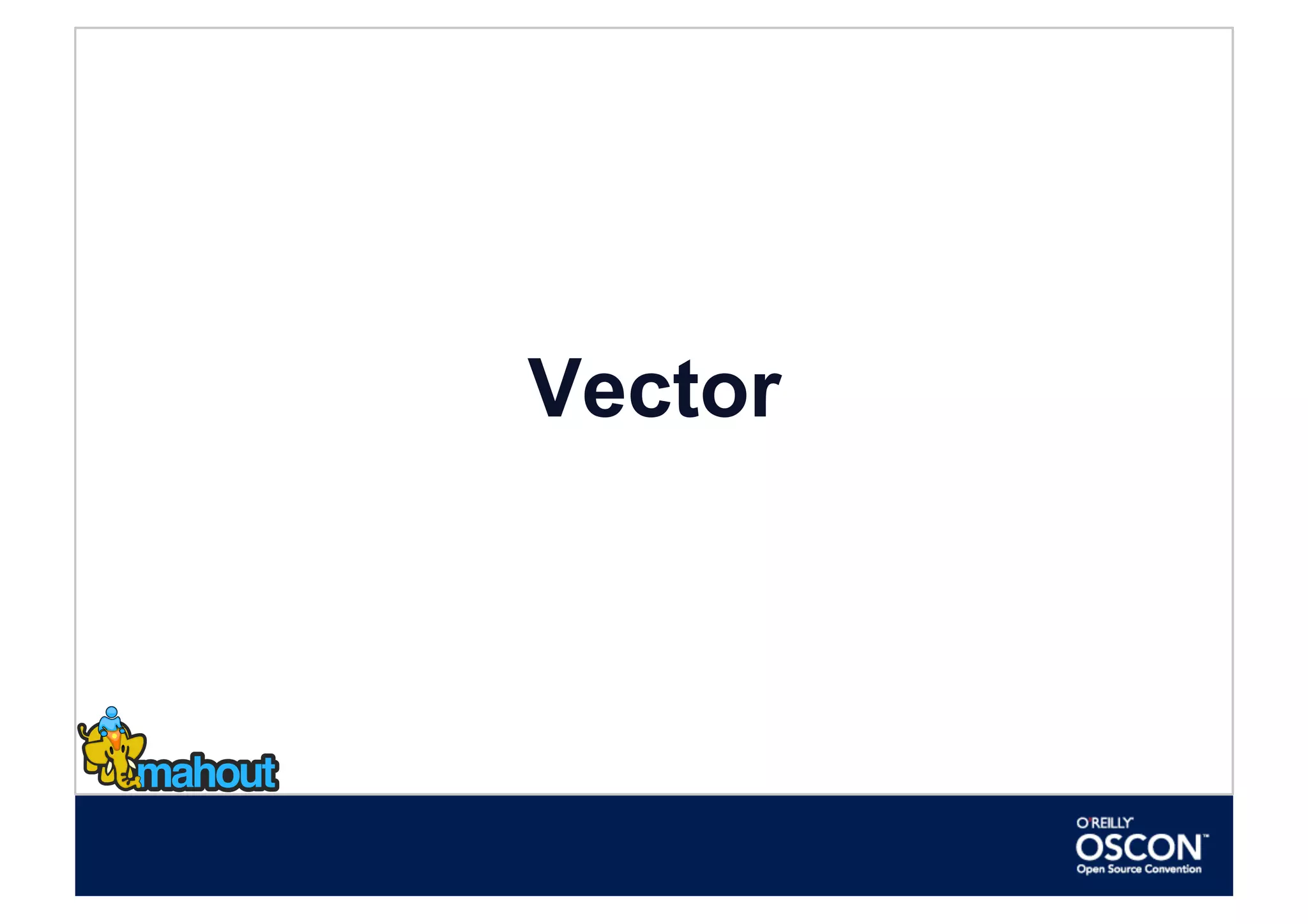
![Representing Data as Vectors
Y
X = 5 , Y = 3
(5, 3)
X
The vector denoted by point (5, 3) is simply
Array([5, 3]) or HashMap([0 => 5], [1 => 3])](https://image.slidesharecdn.com/mahoutoscon-final-100722201843-phpapp01/75/OSCON-Apache-Mahout-Mammoth-Scale-Machine-Learning-29-2048.jpg)
![Representing Vectors – The basics
Now think 3, 4, 5, ….. n-dimensional
Think of a document as a bag of words.
“she sells sea shells on the sea shore”
Now map them to integers
she => 0
sells => 1
sea => 2
and so on
The resulting vector [1.0, 1.0, 2.0, … ]](https://image.slidesharecdn.com/mahoutoscon-final-100722201843-phpapp01/75/OSCON-Apache-Mahout-Mammoth-Scale-Machine-Learning-30-2048.jpg)
